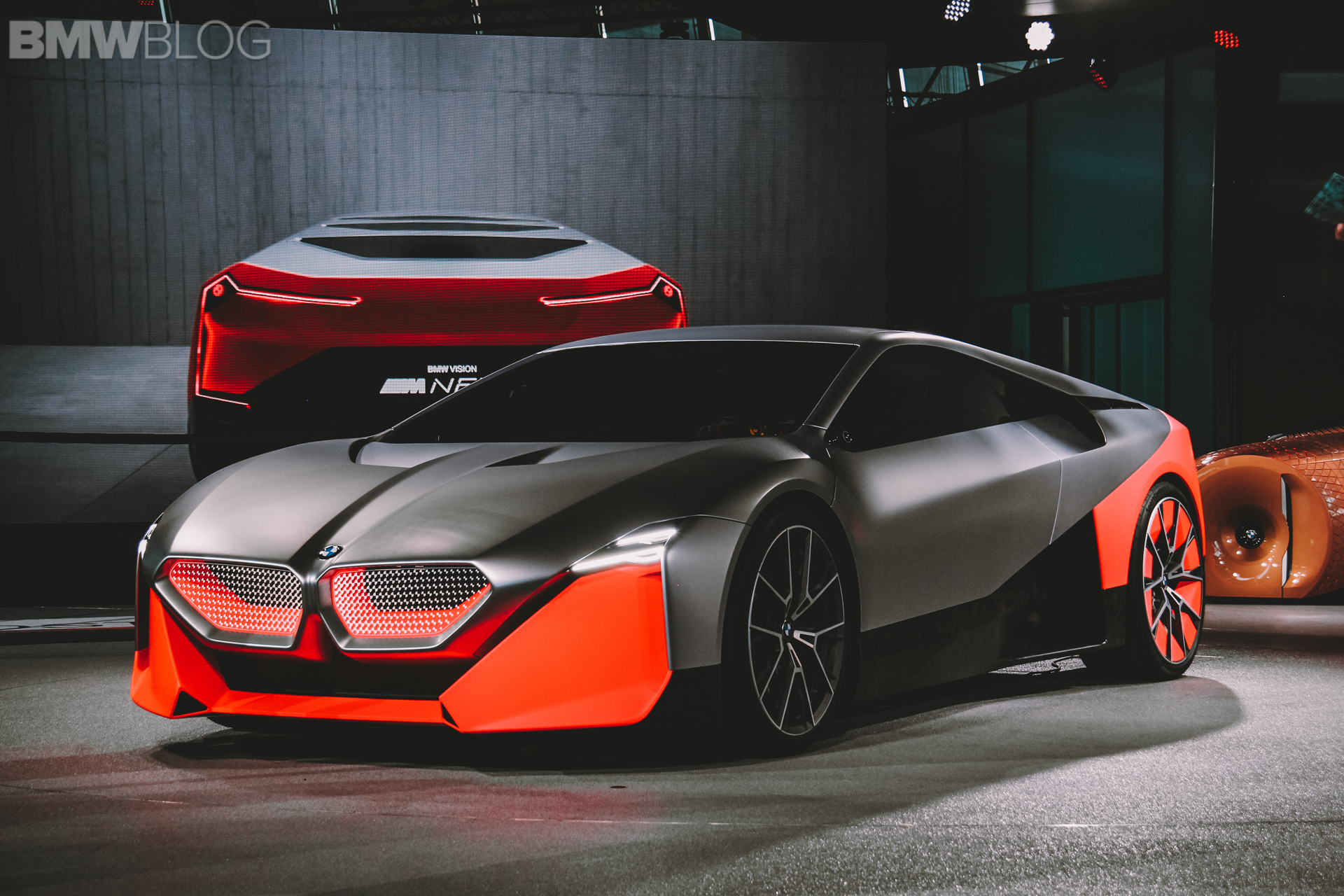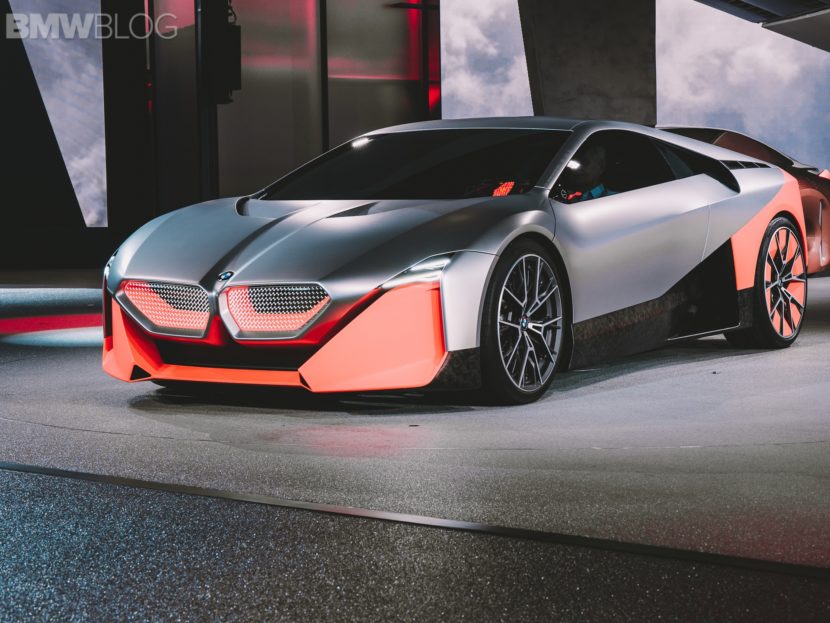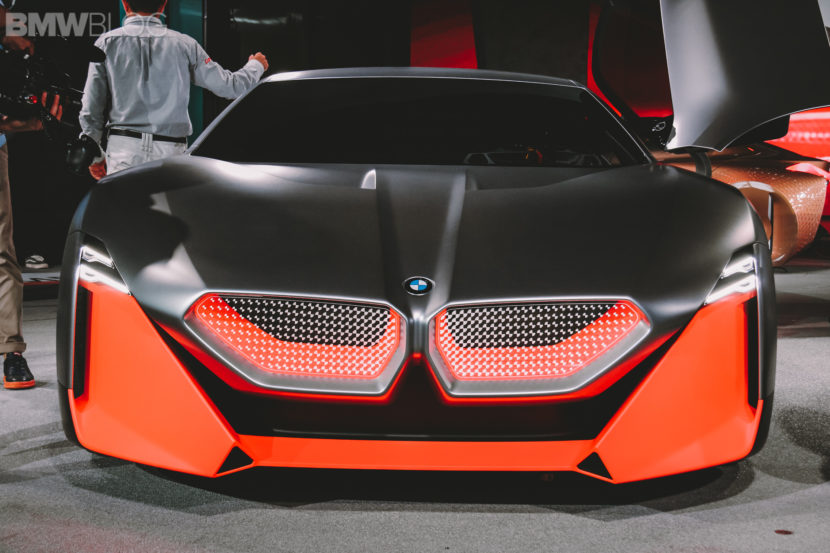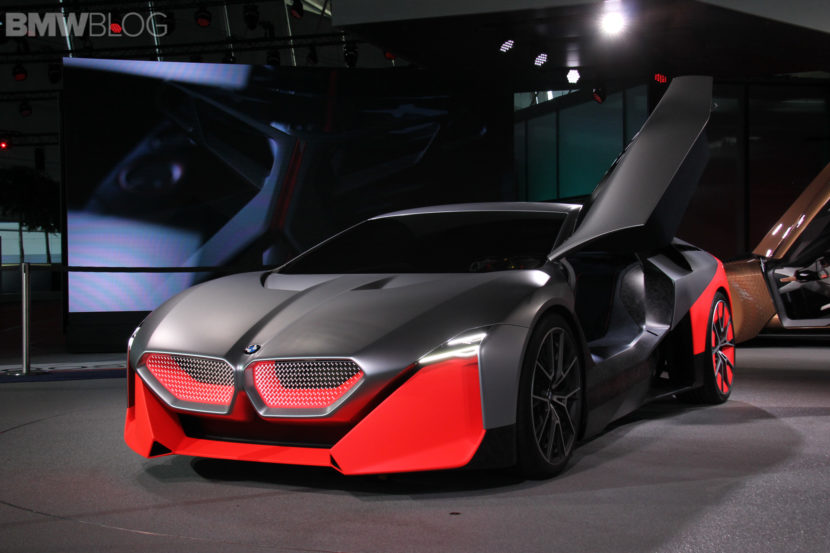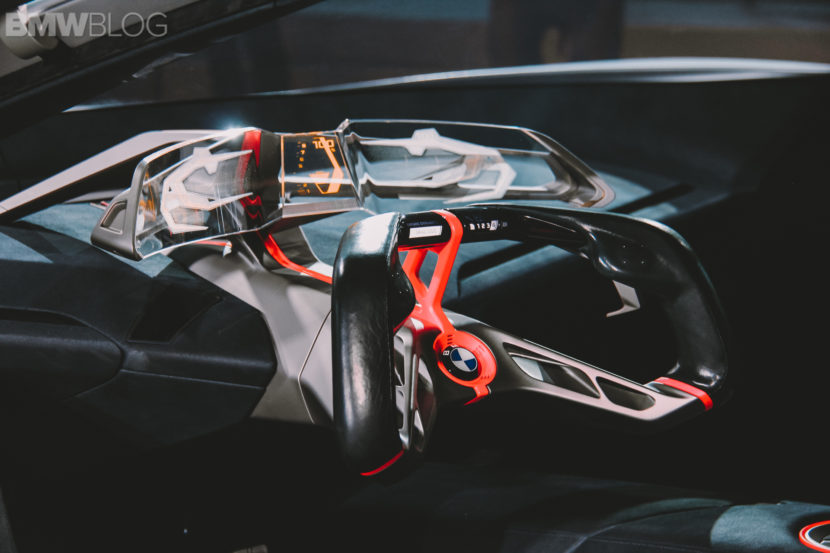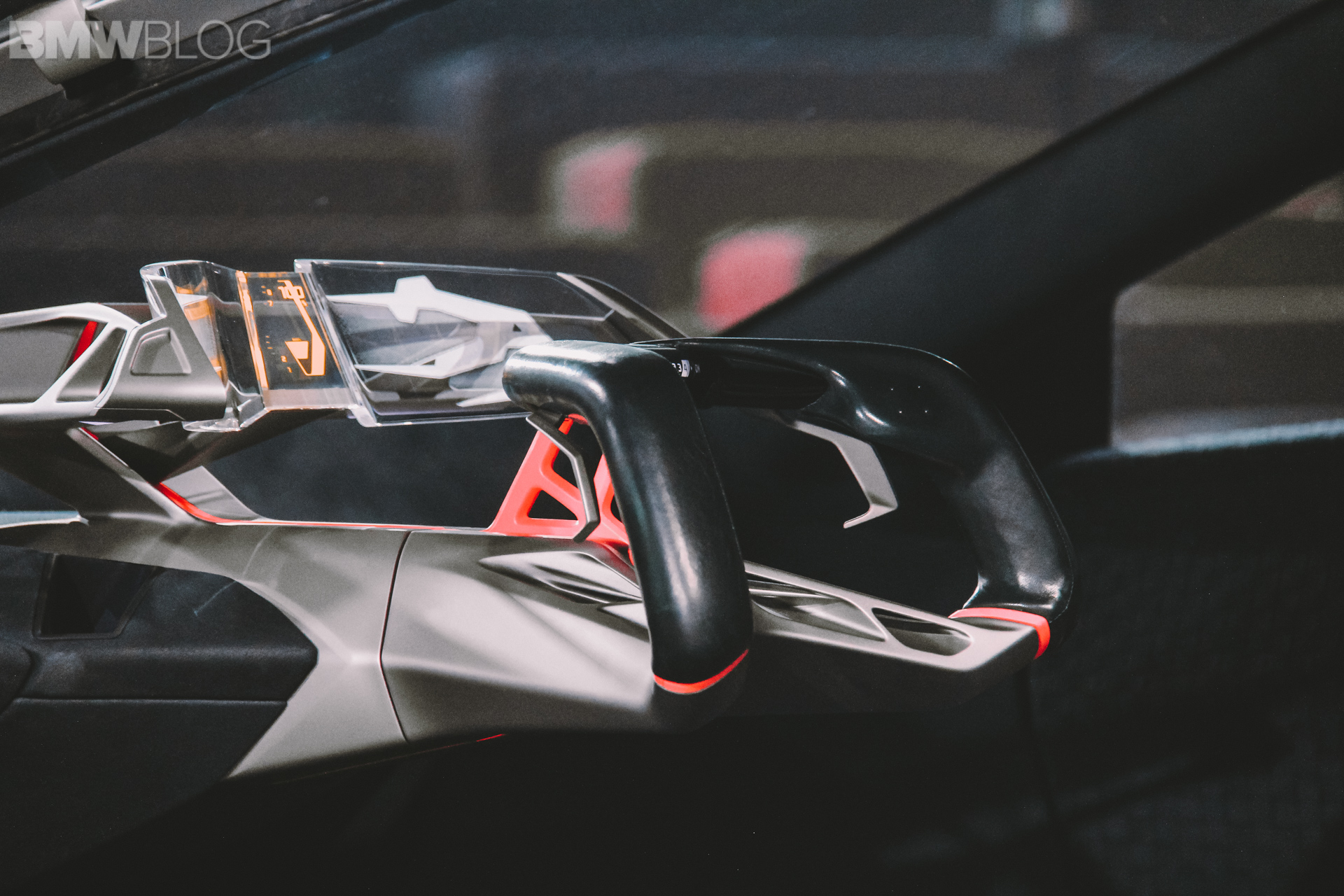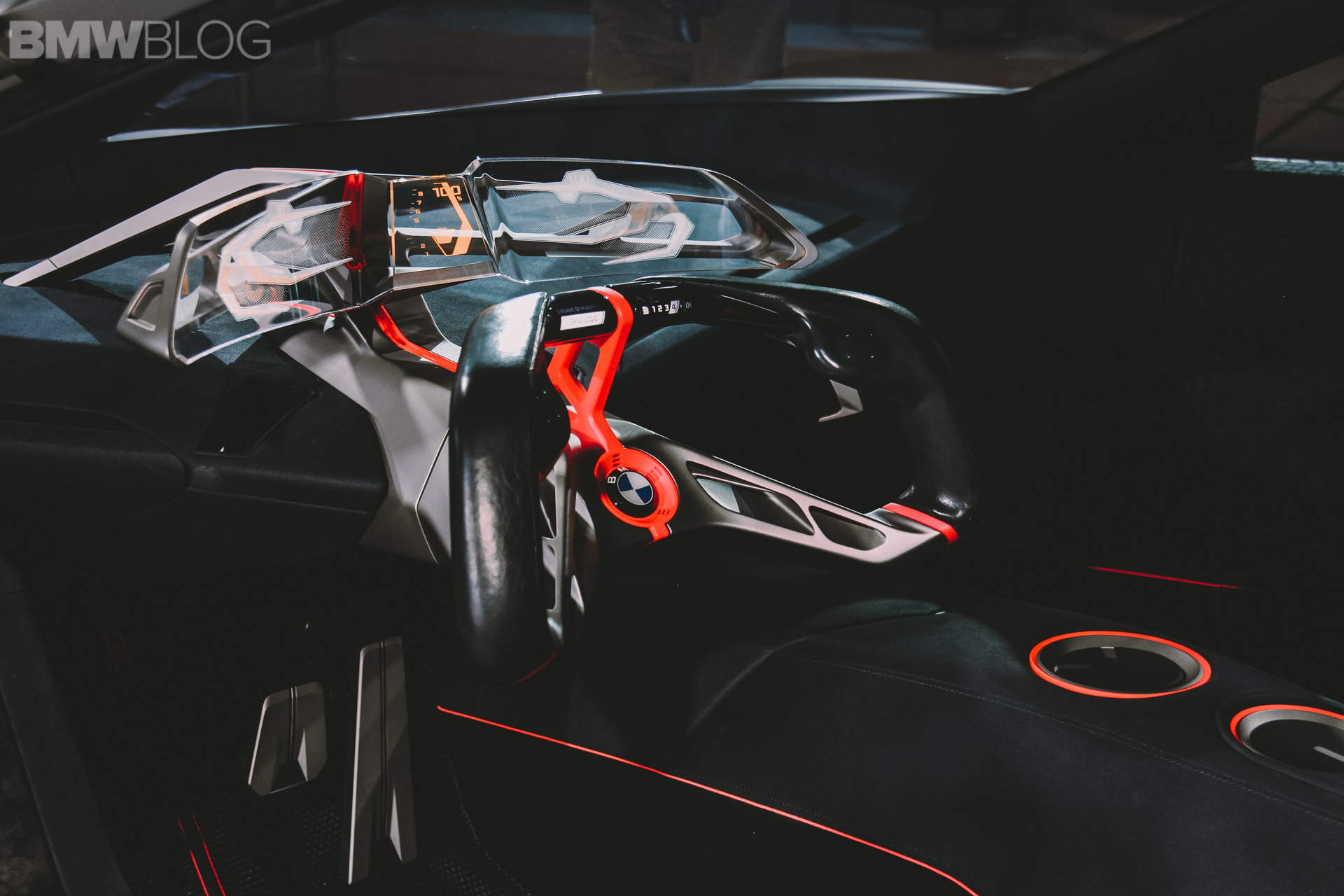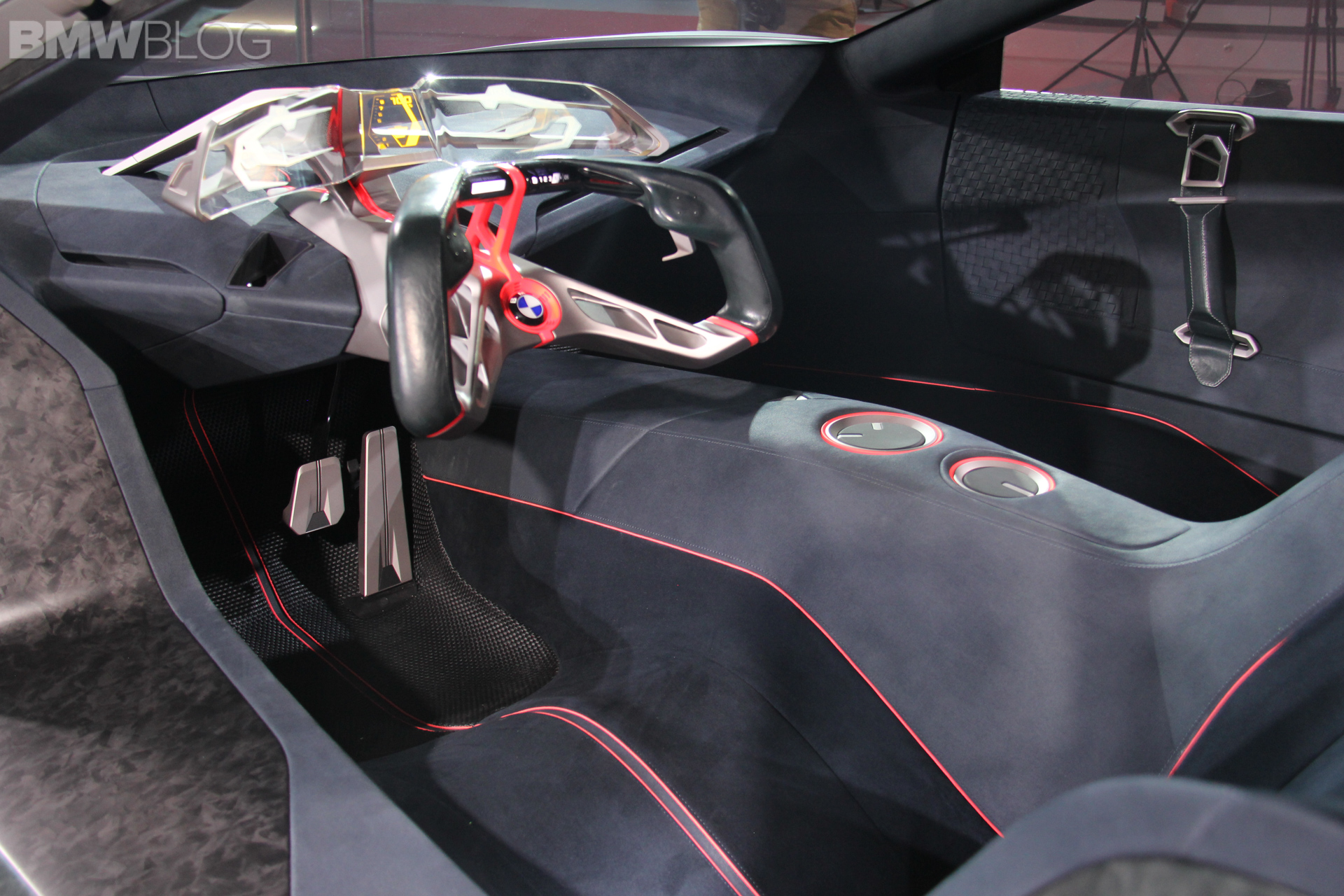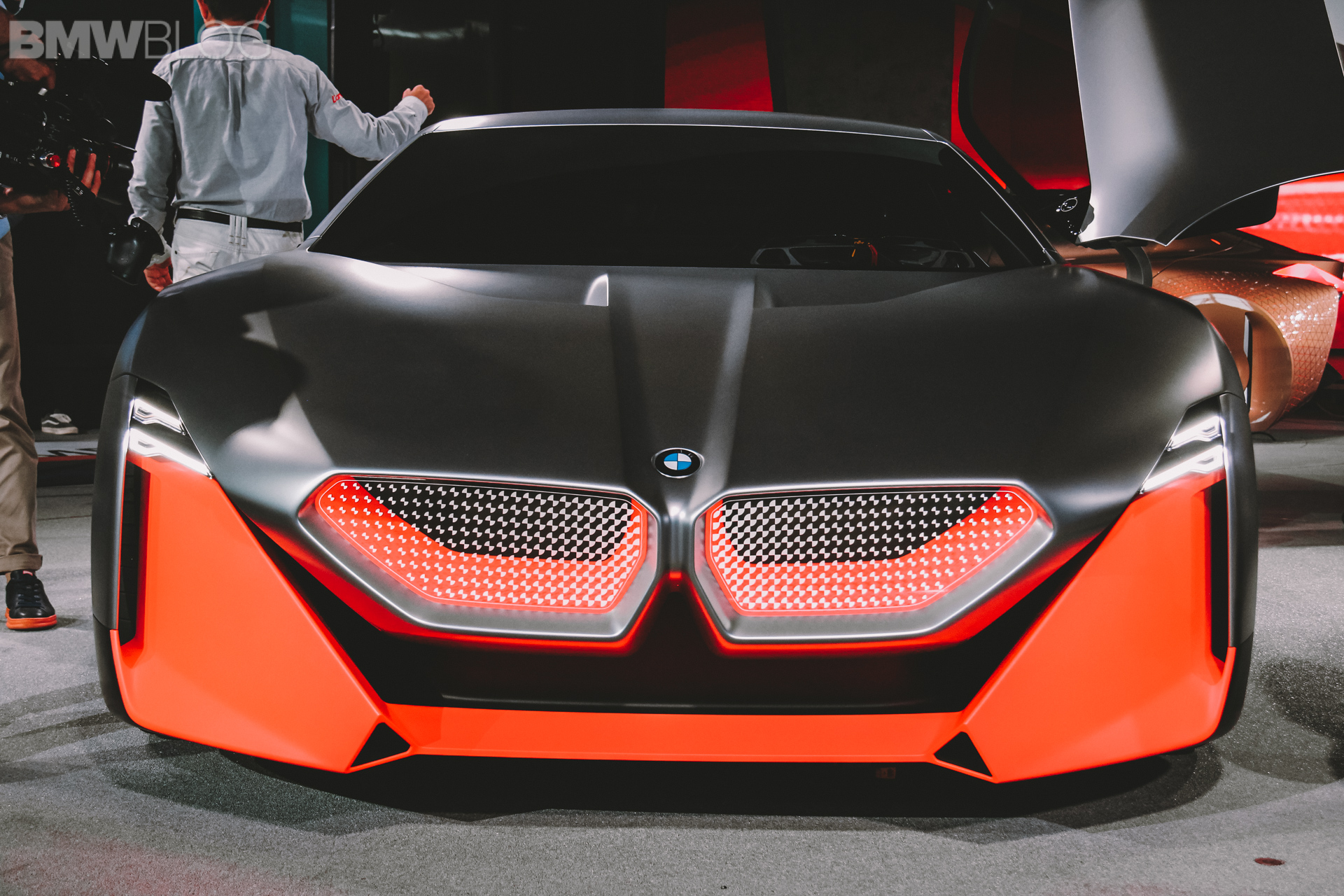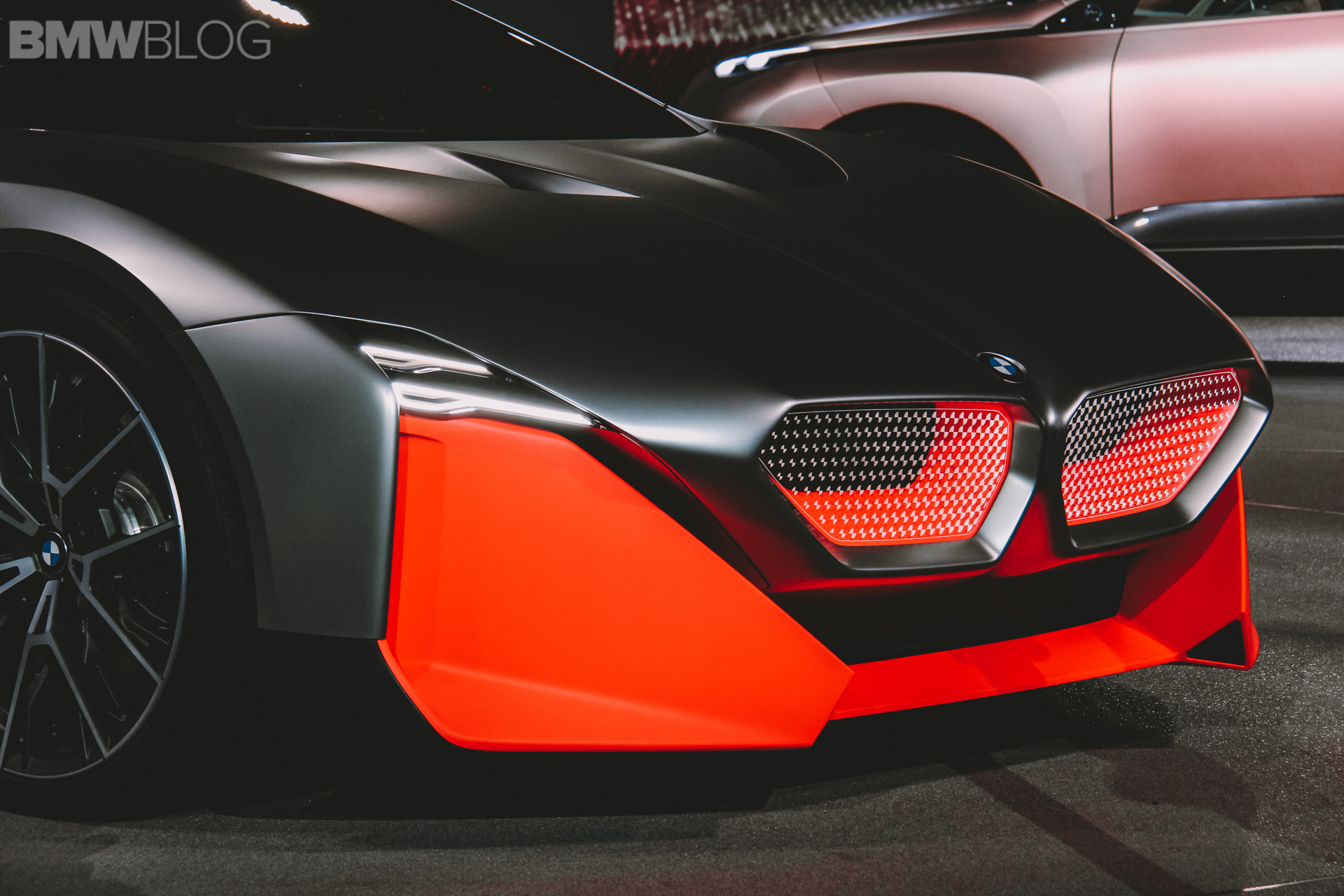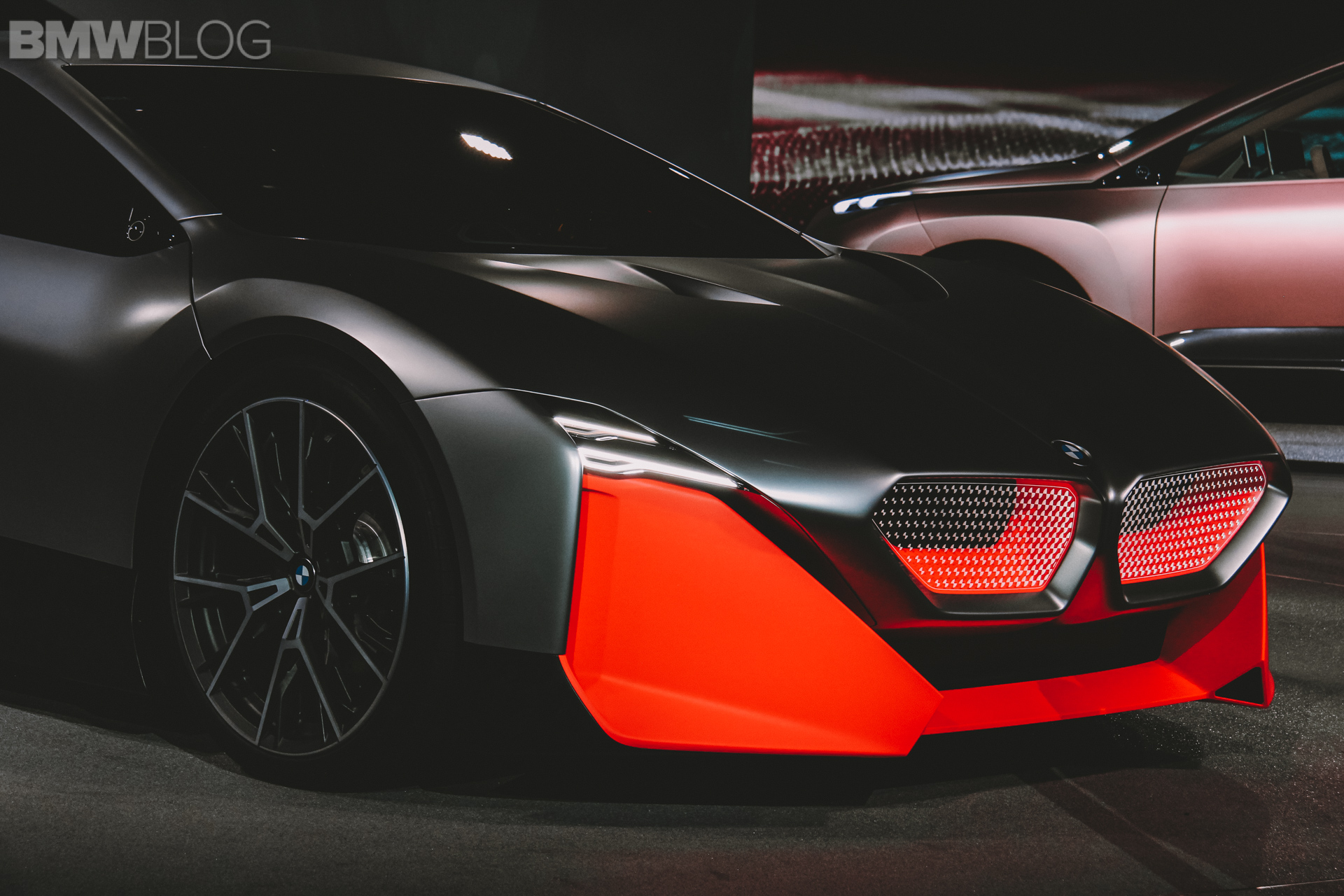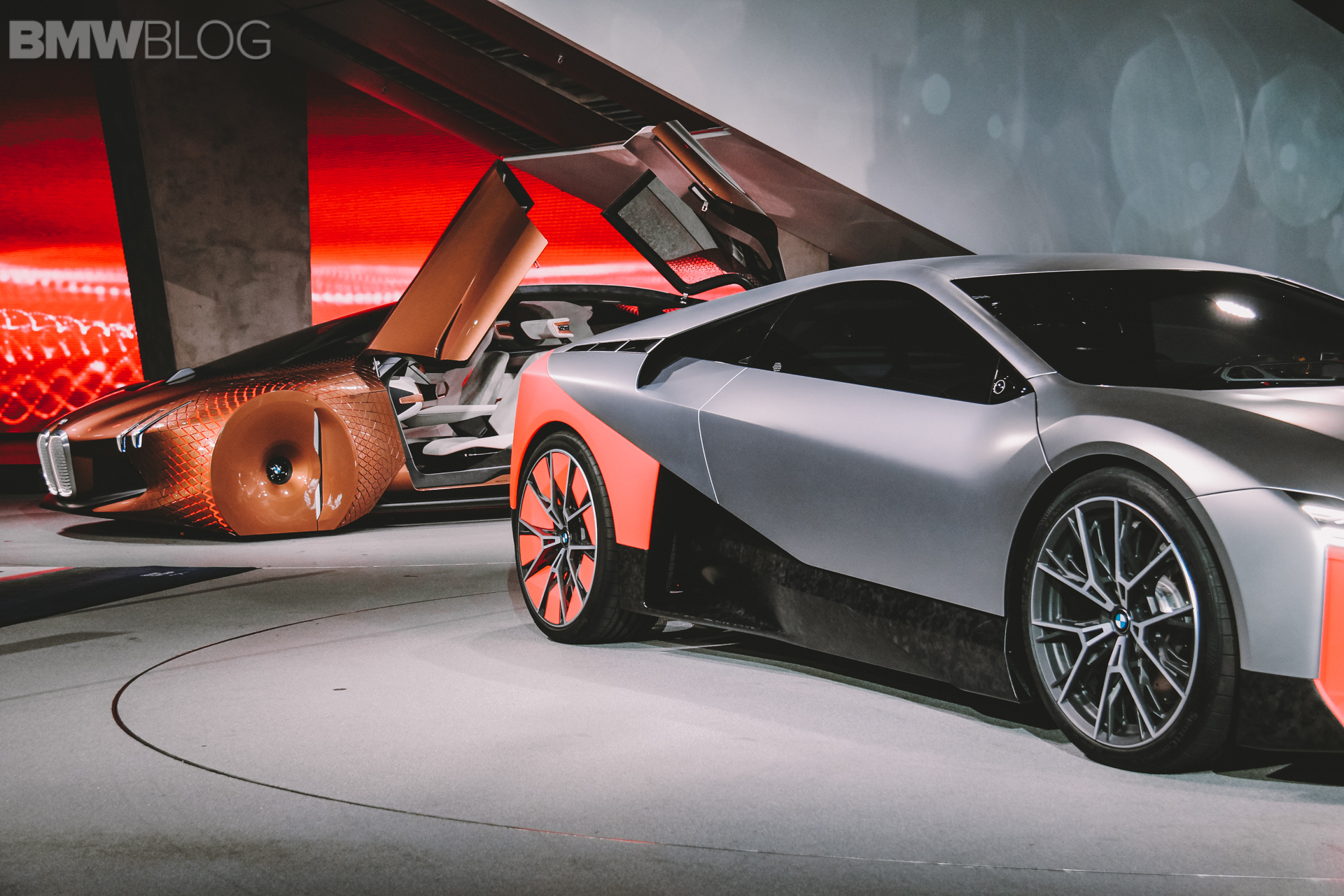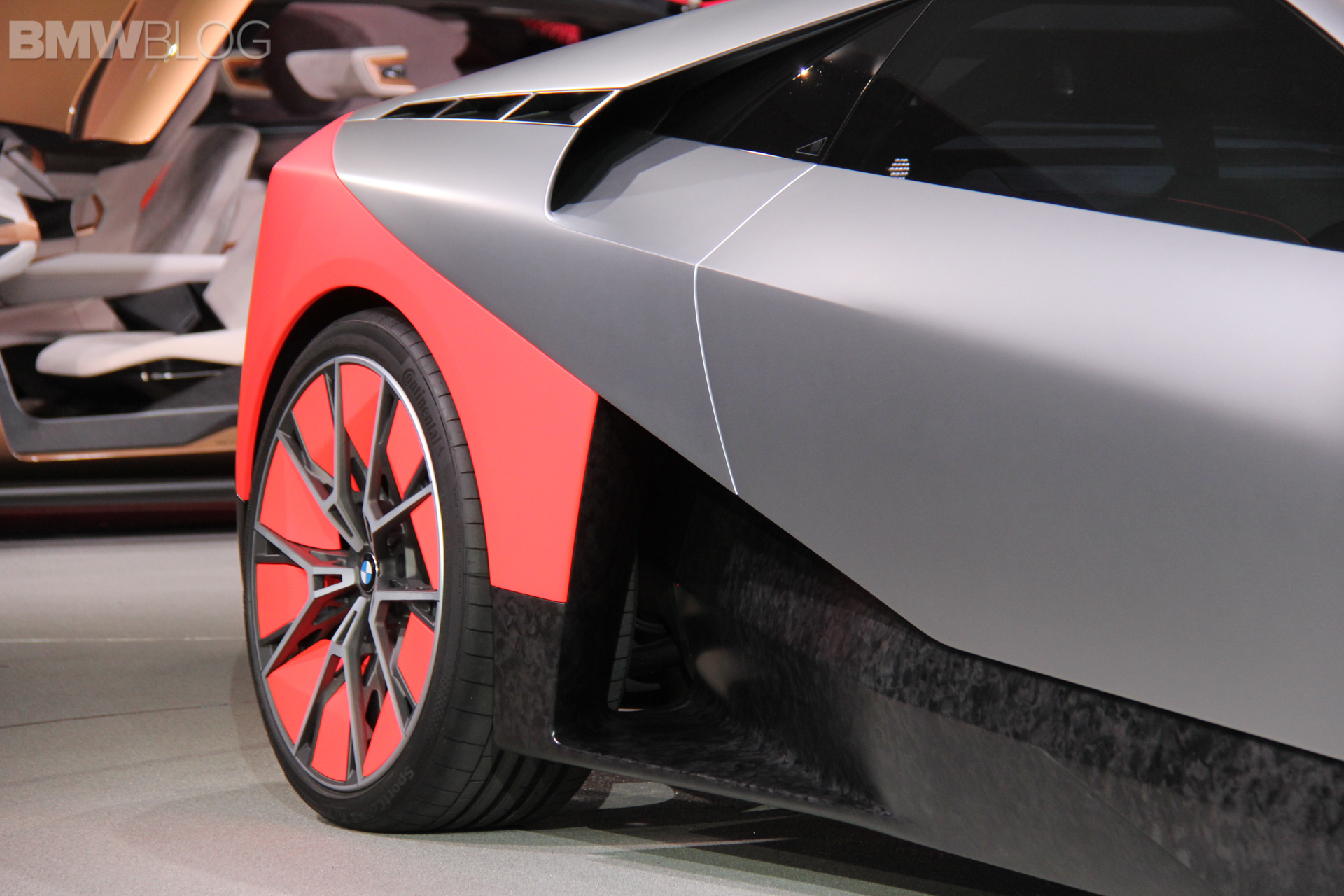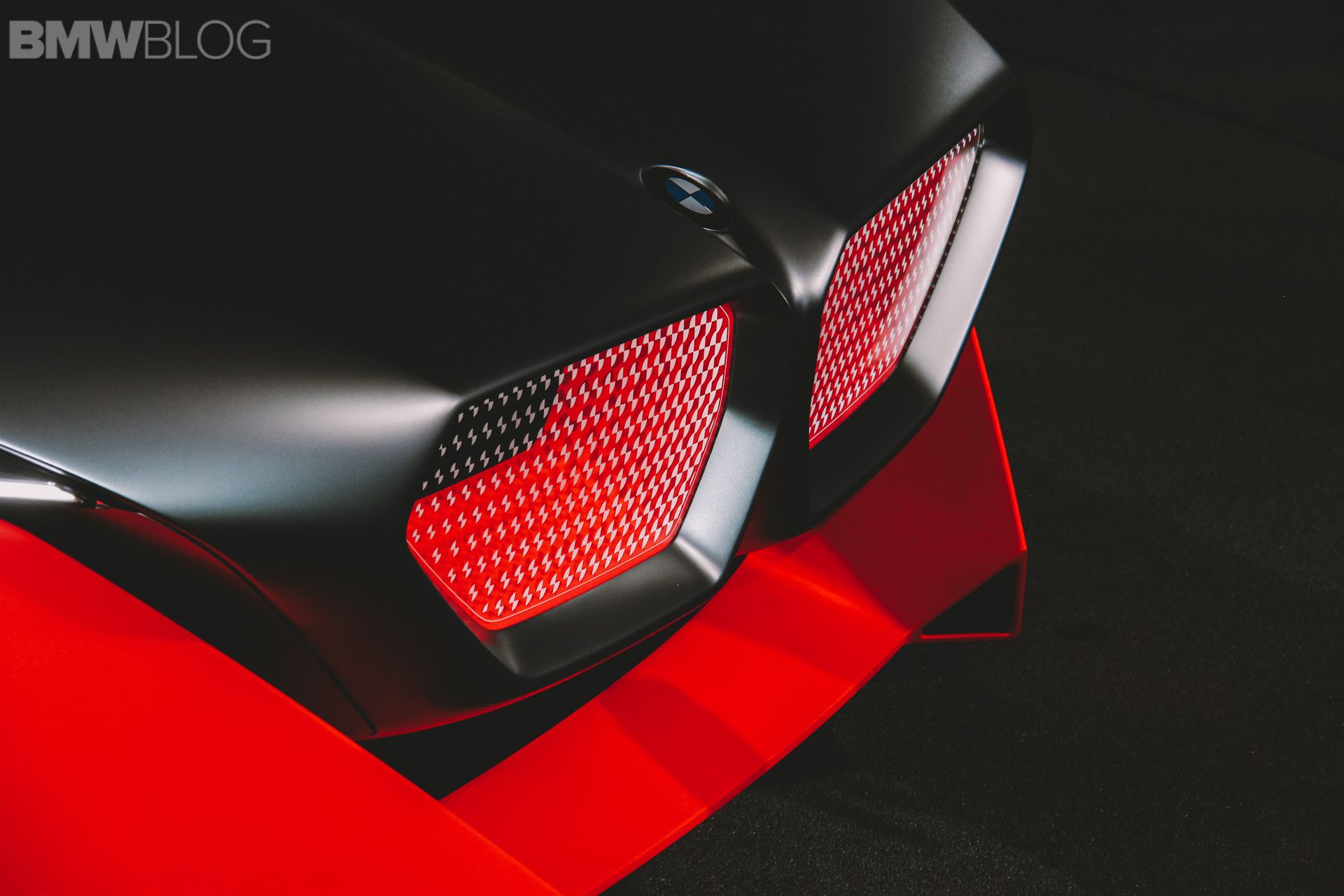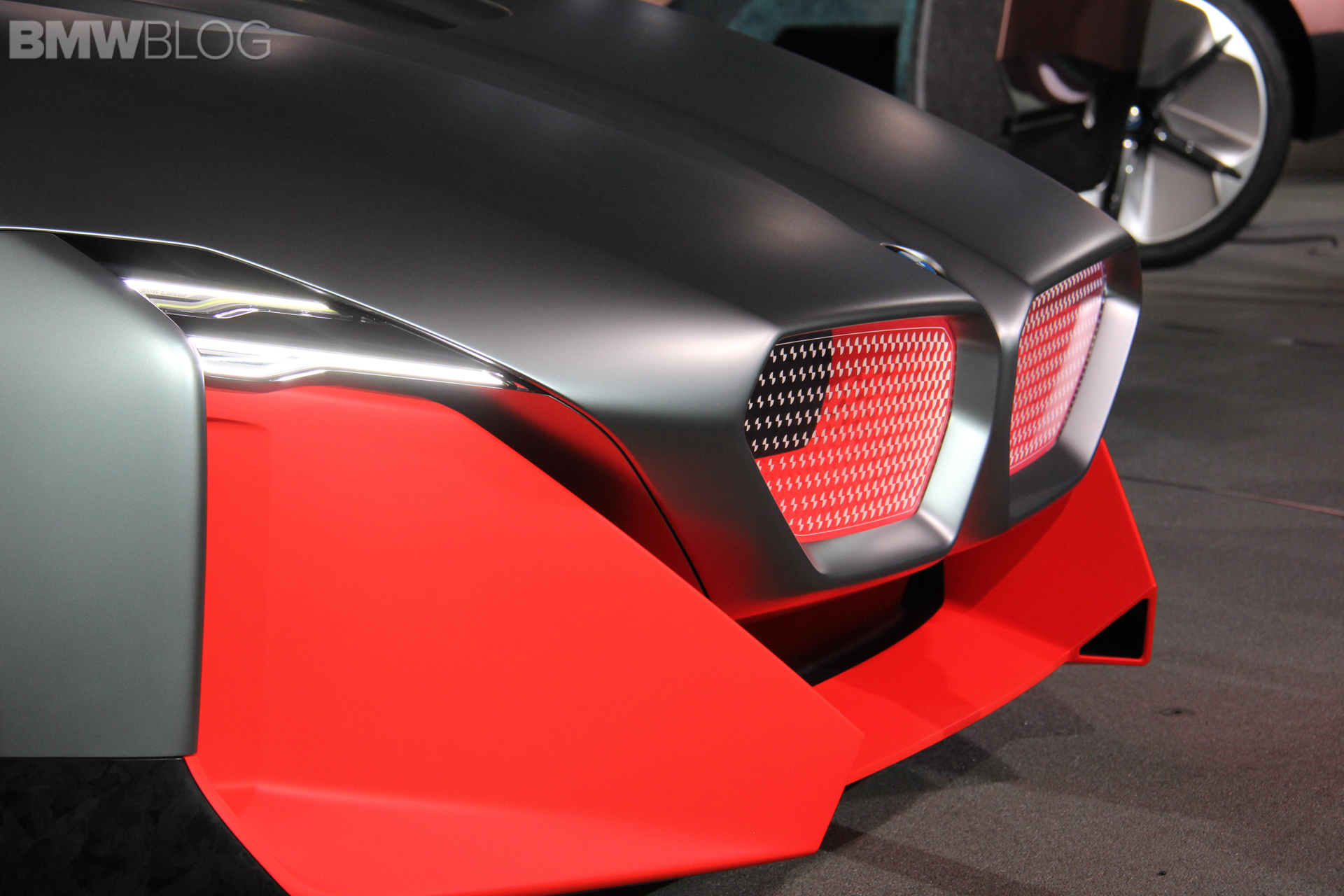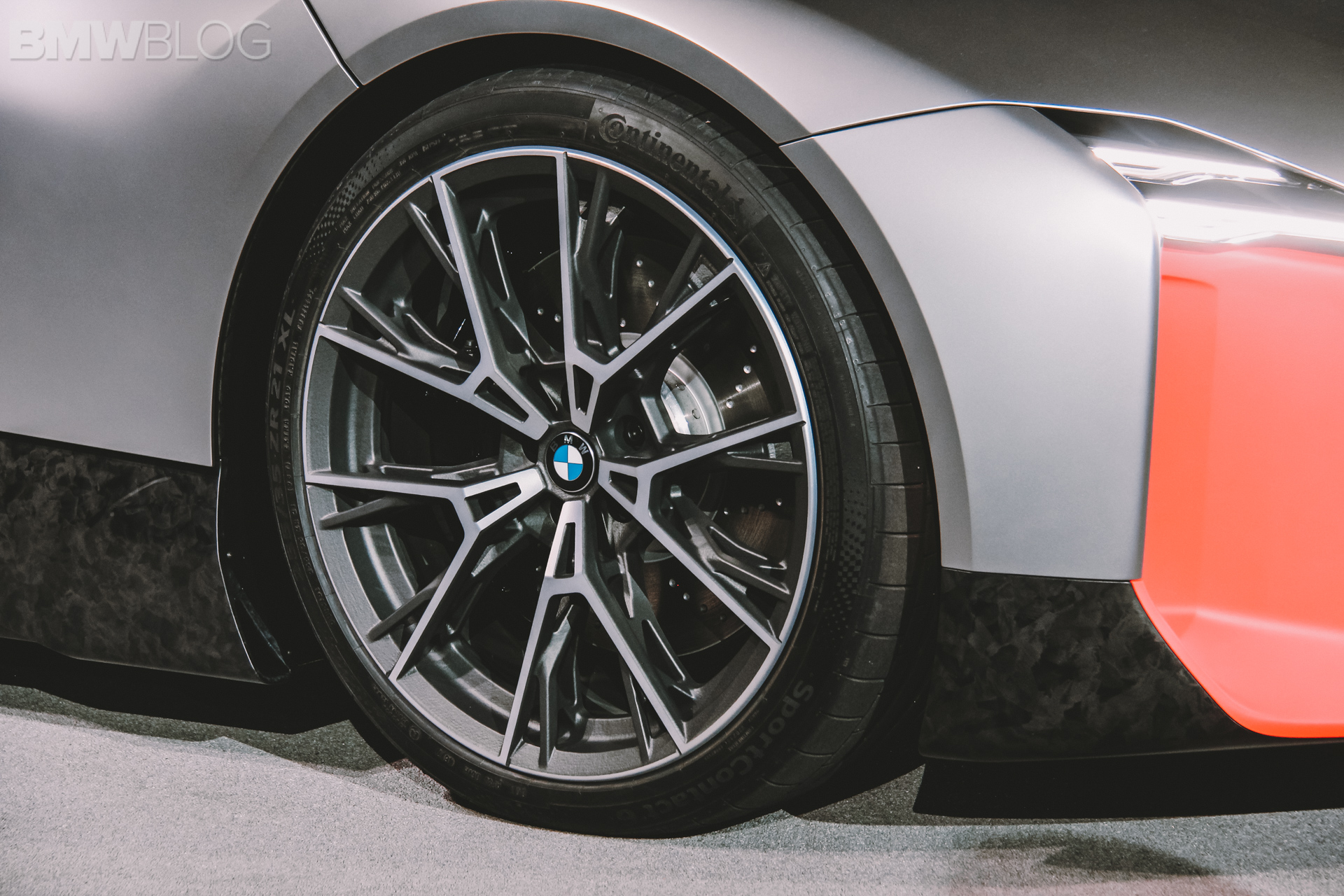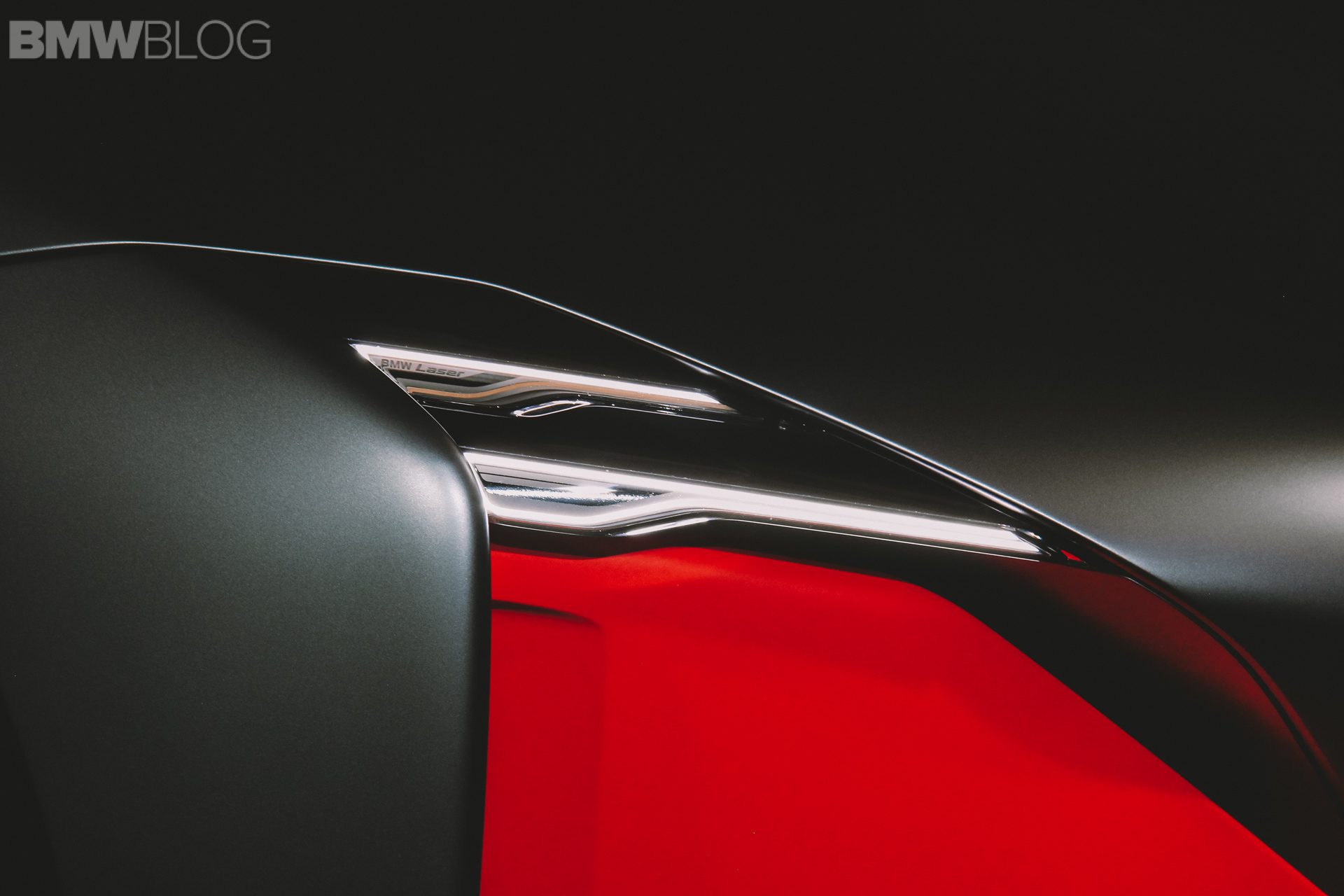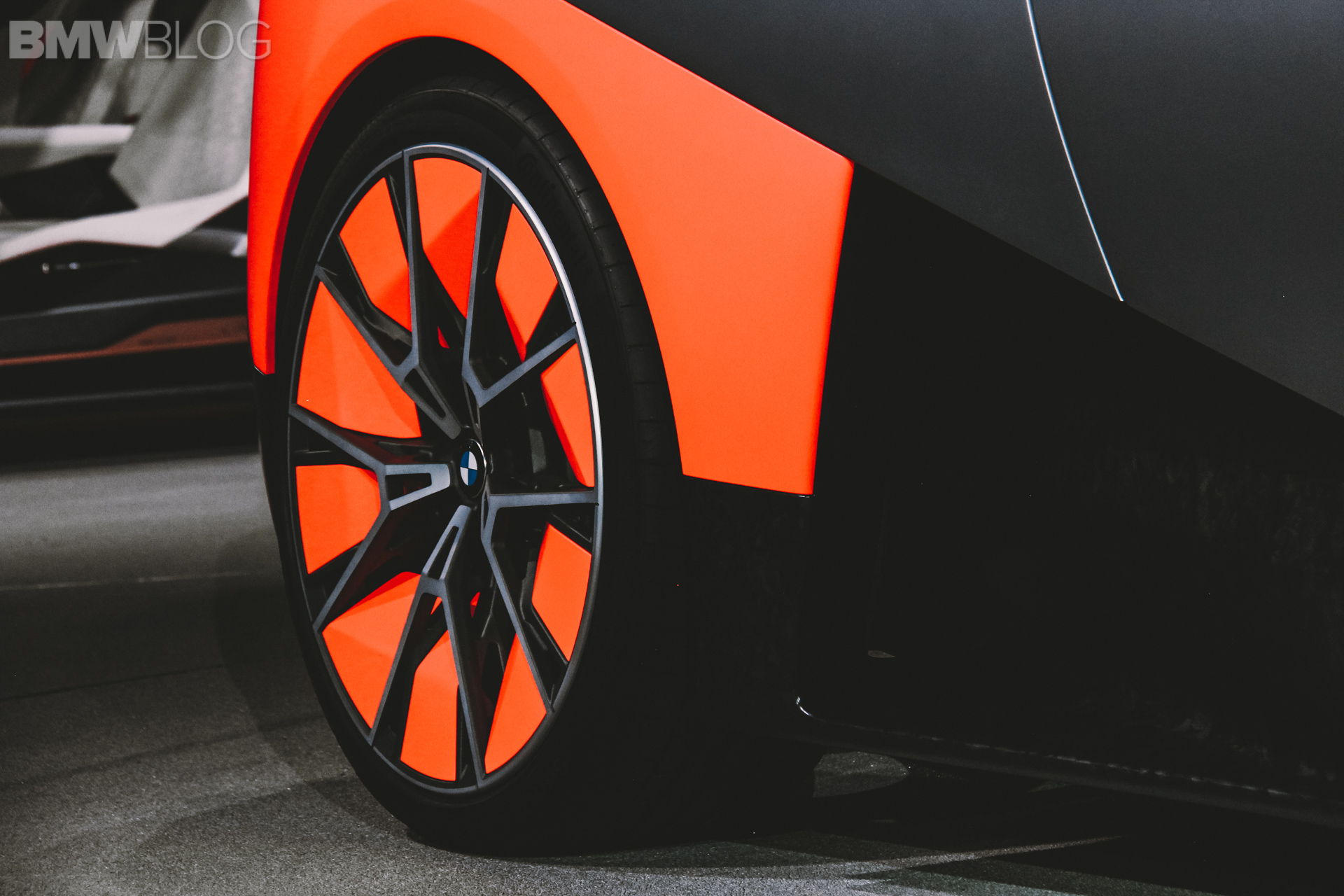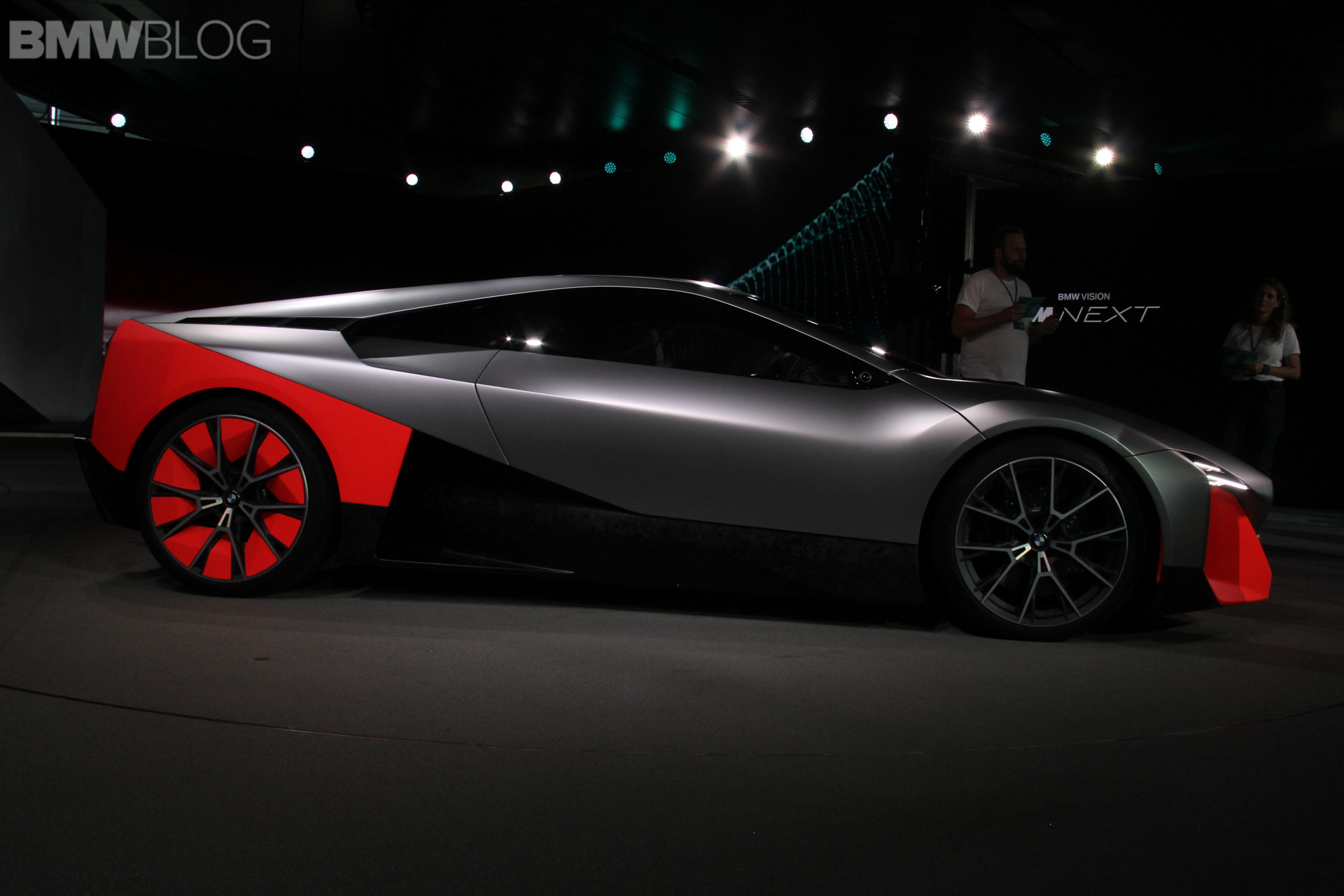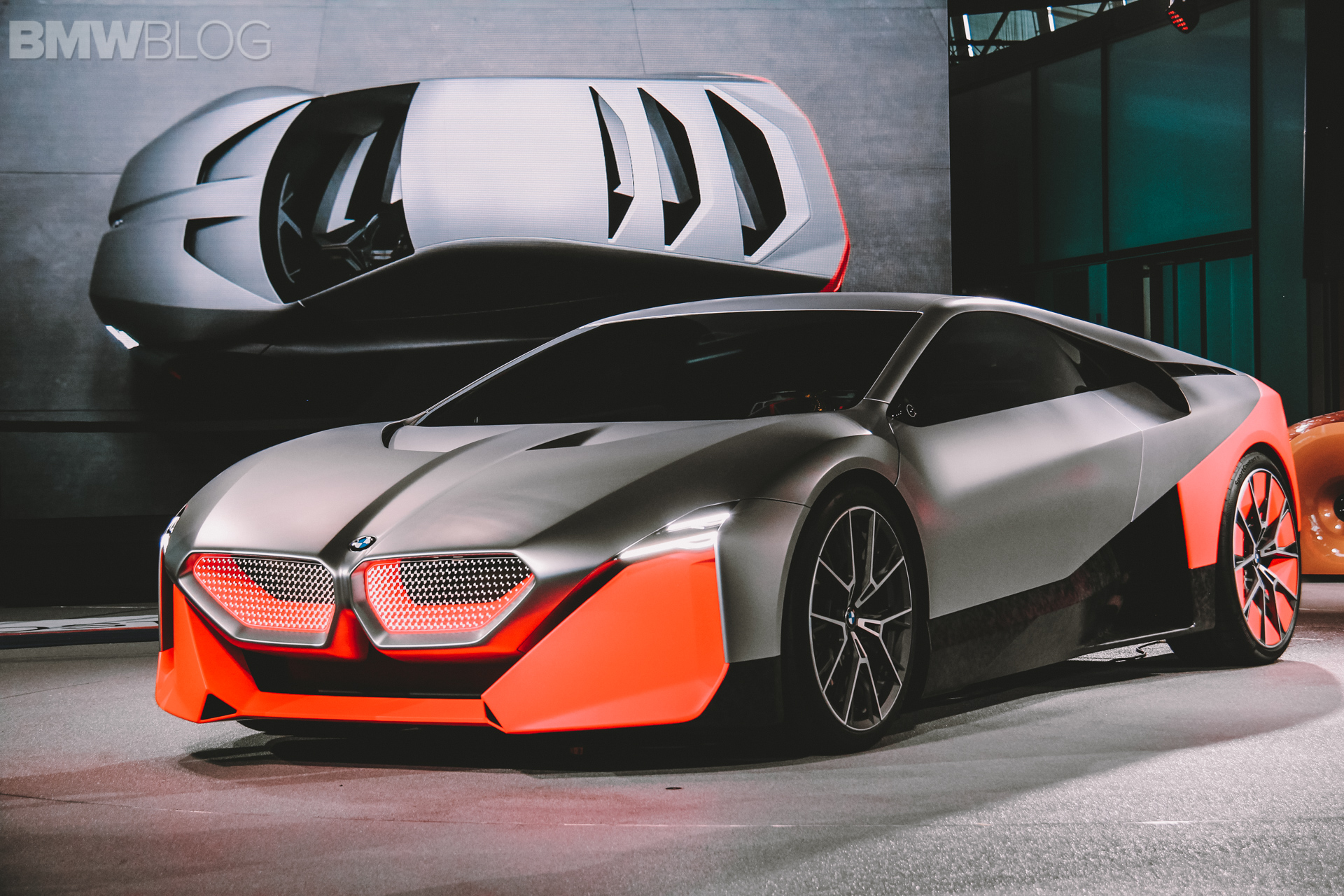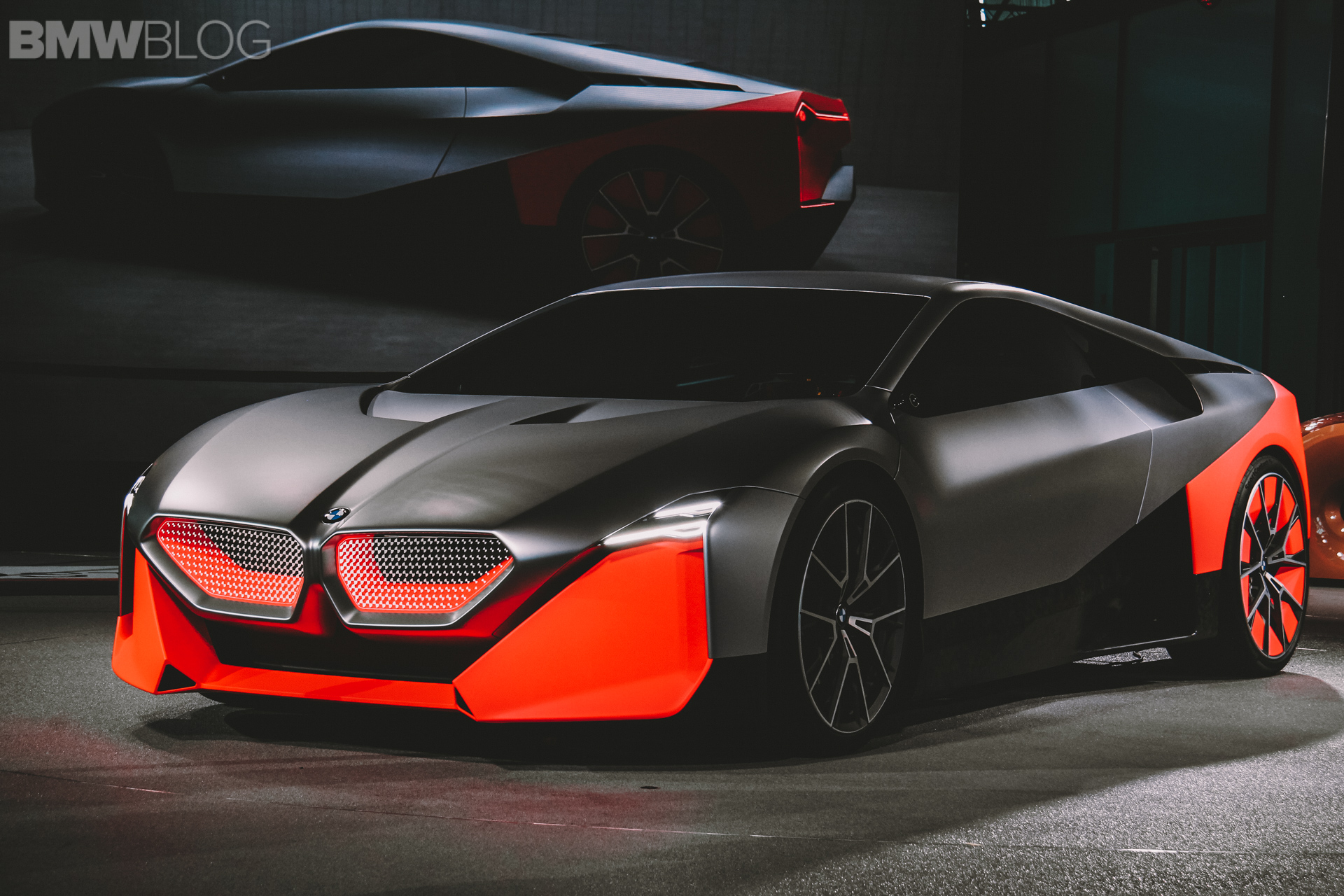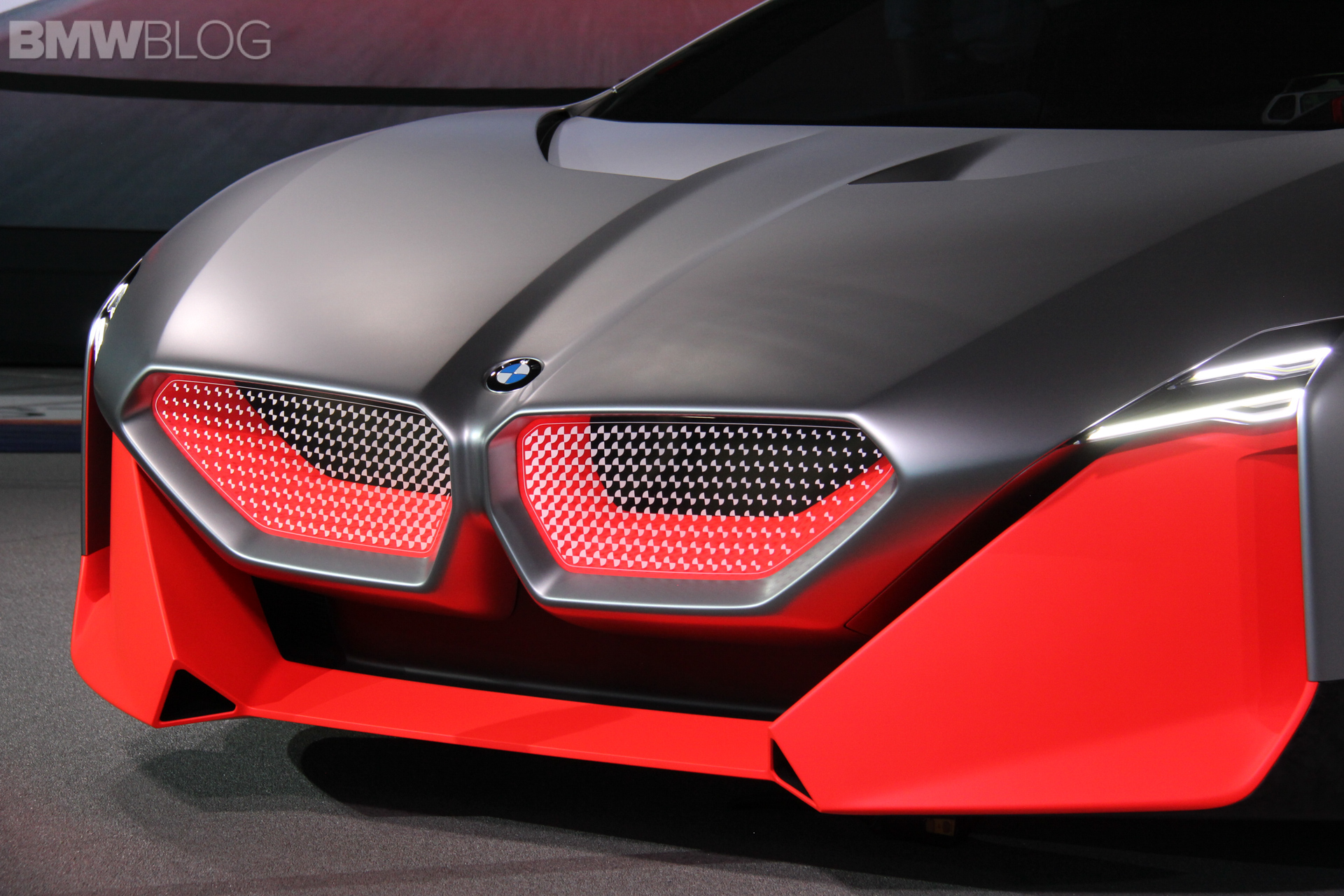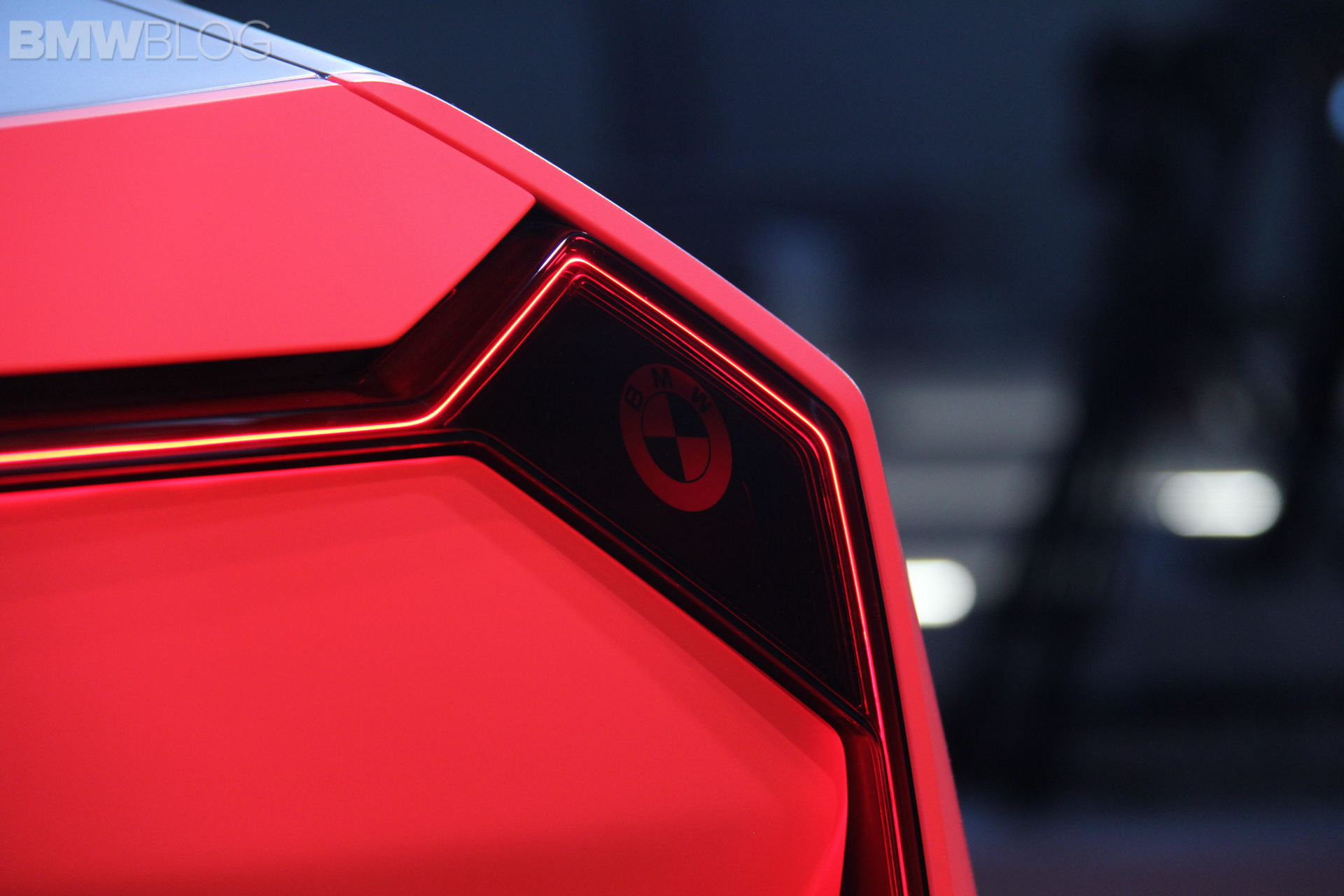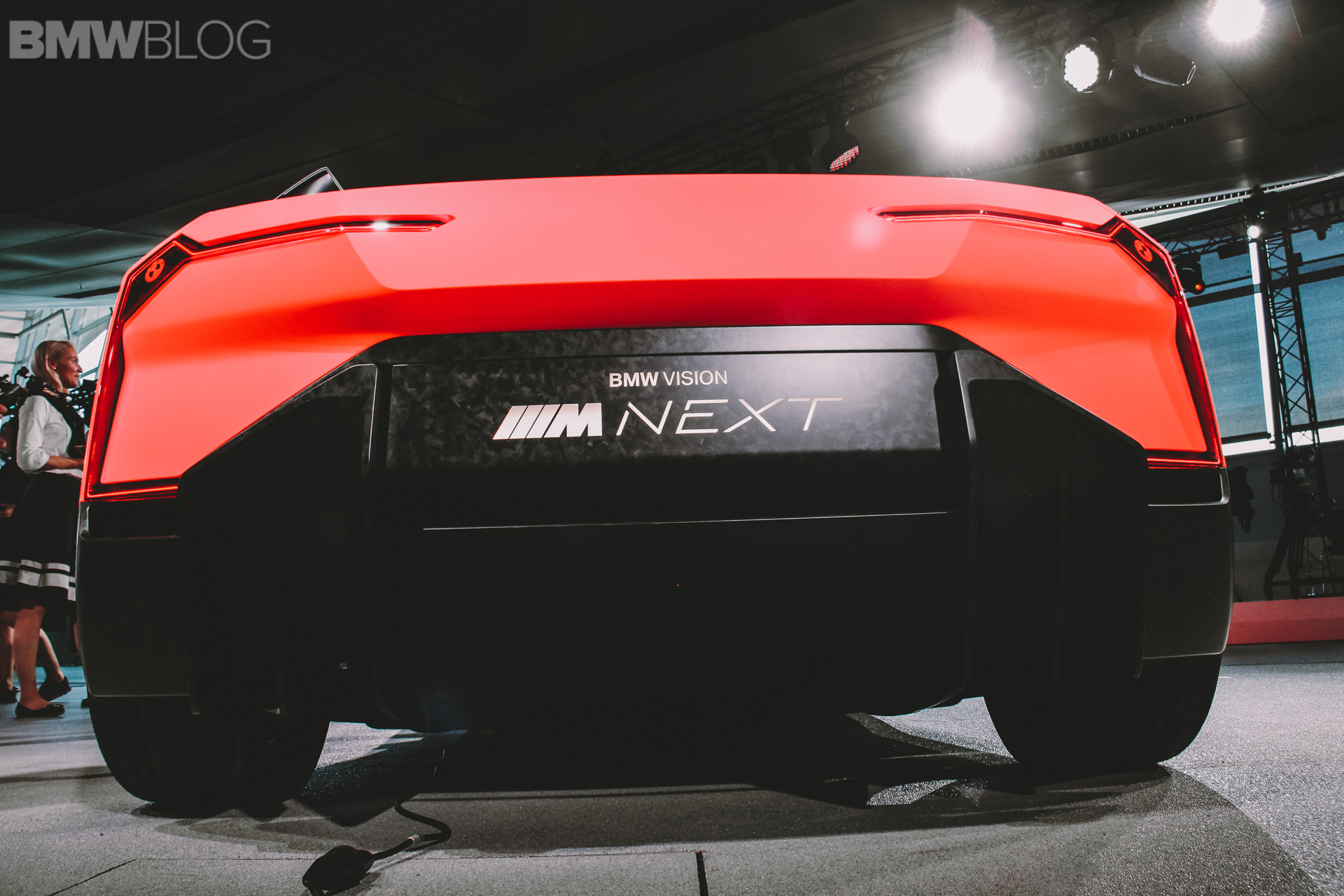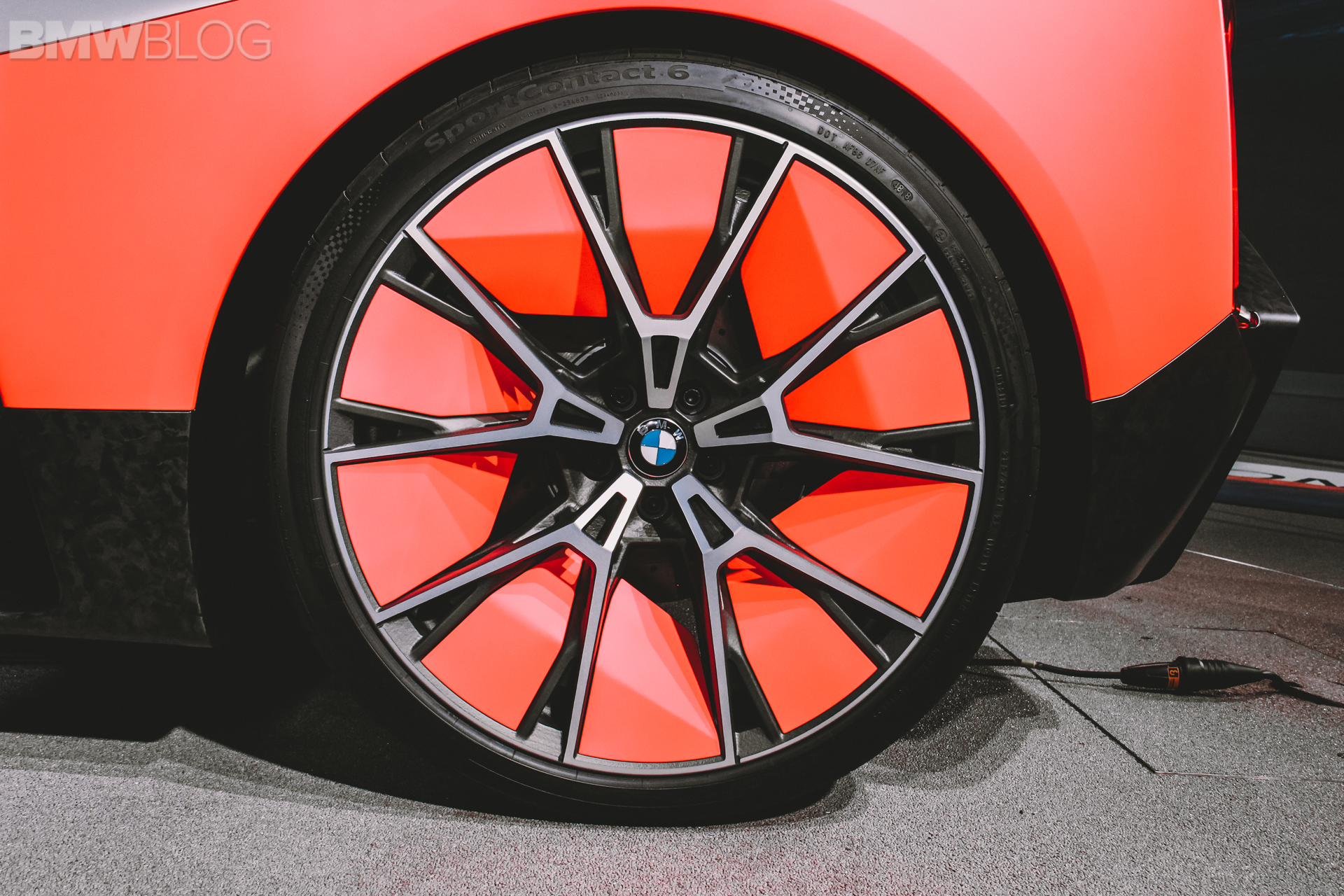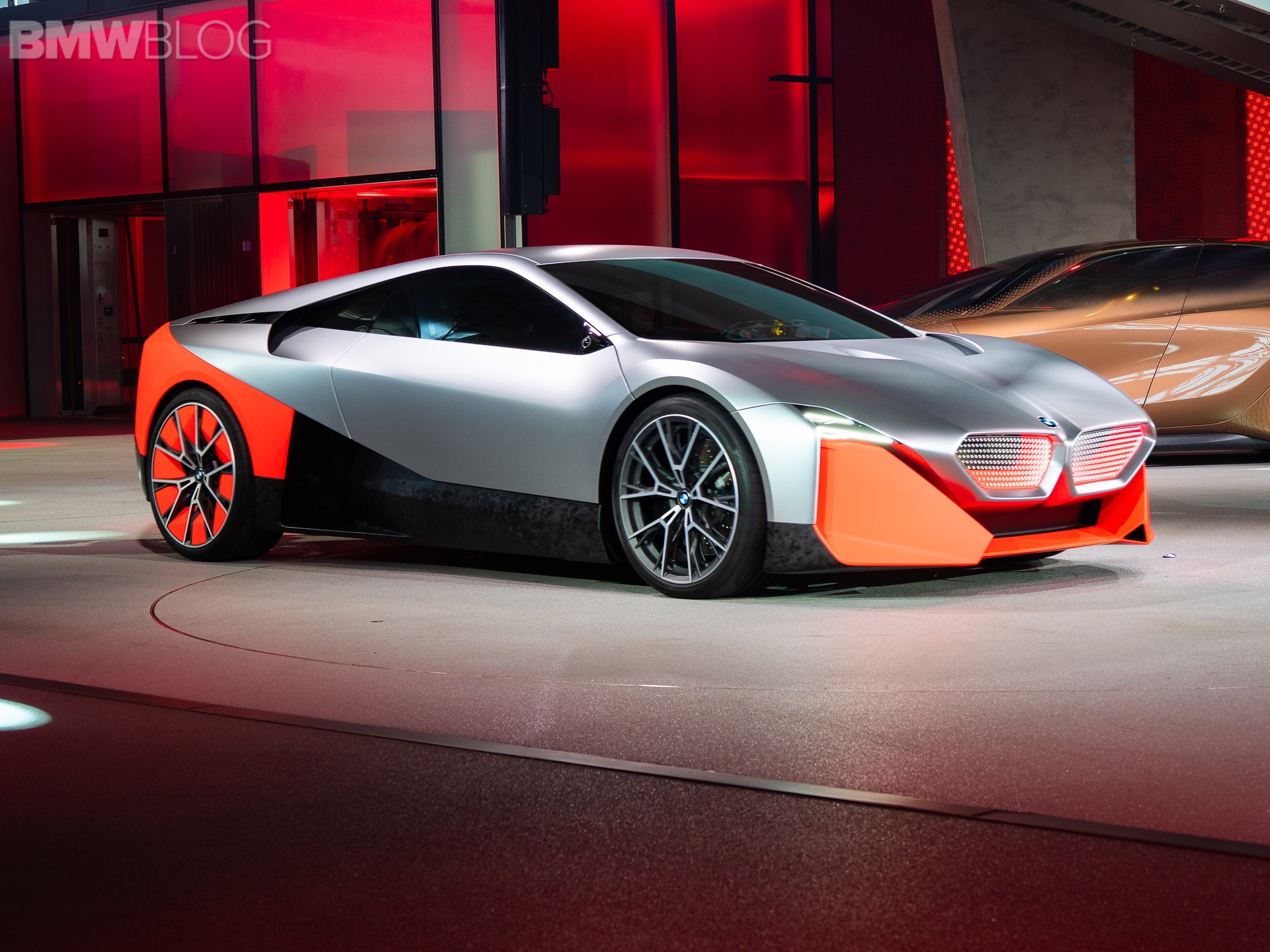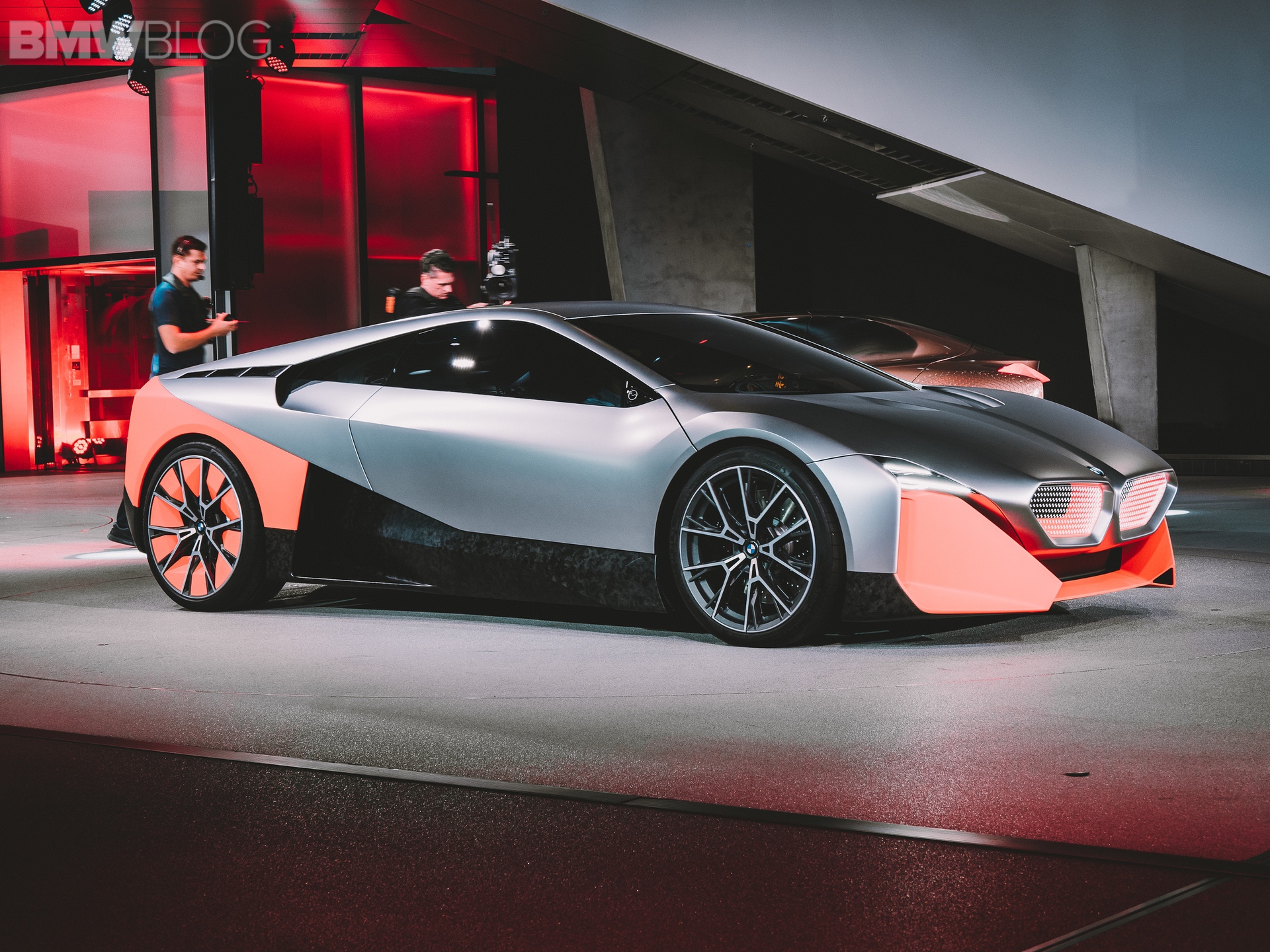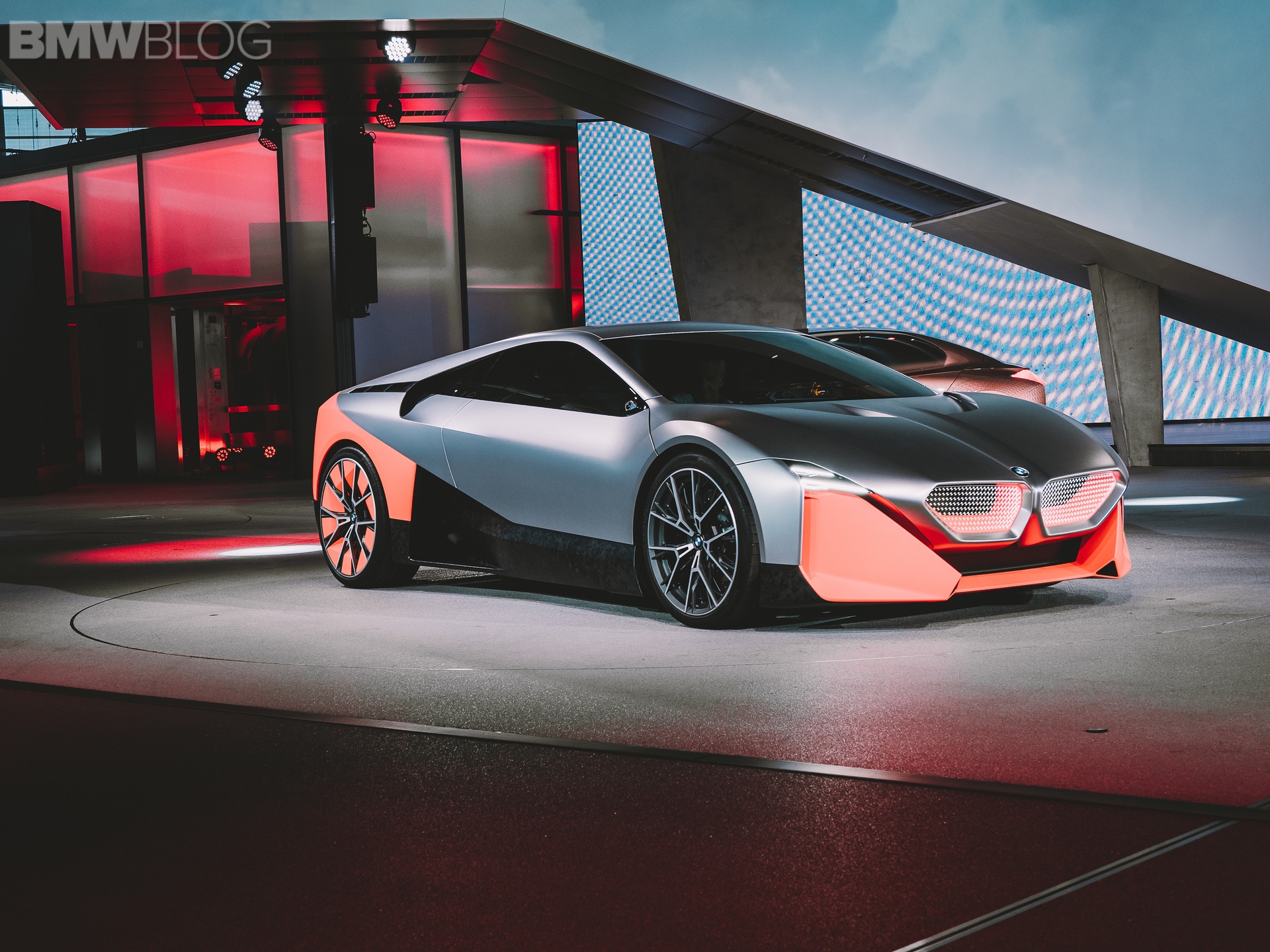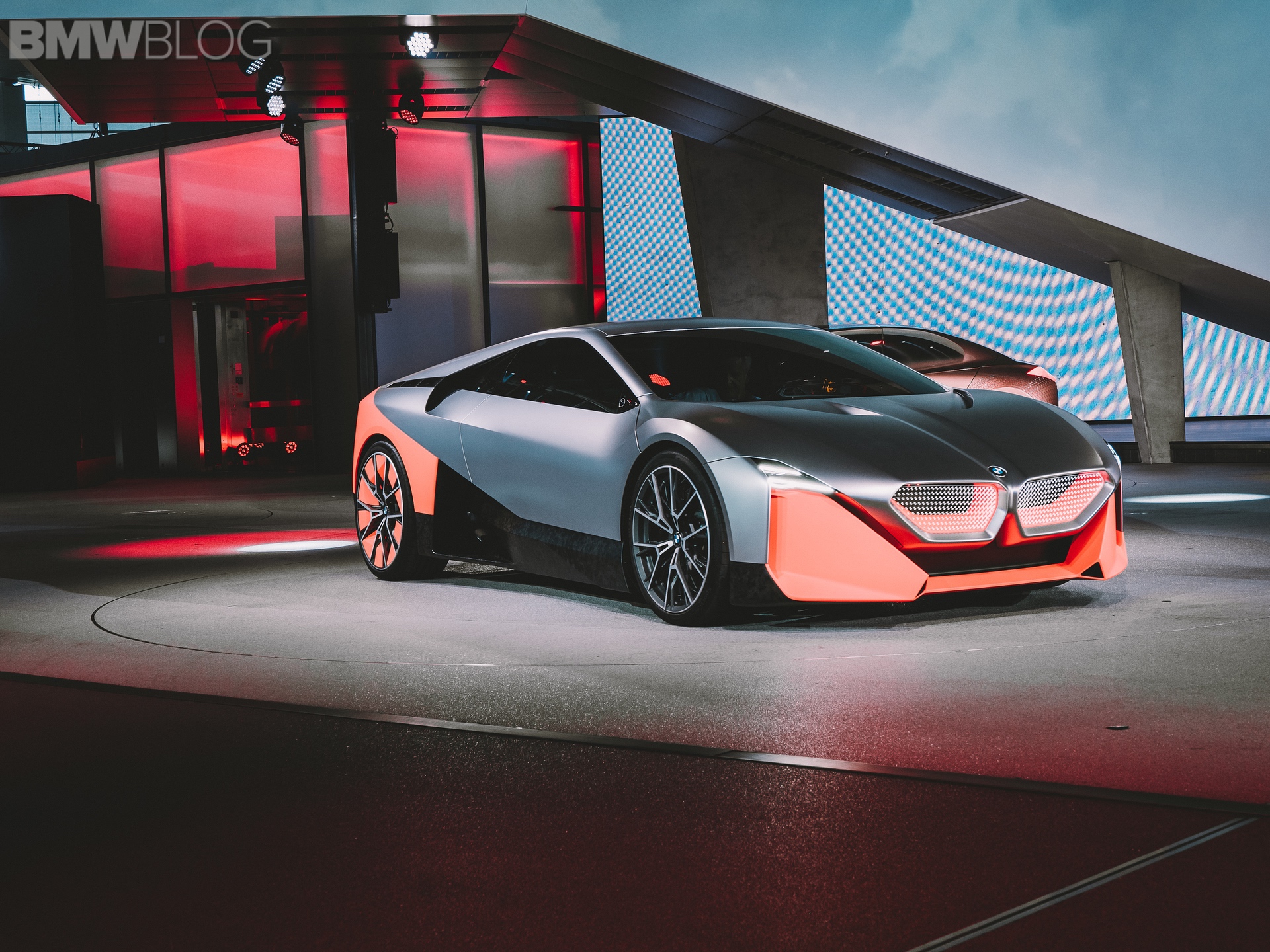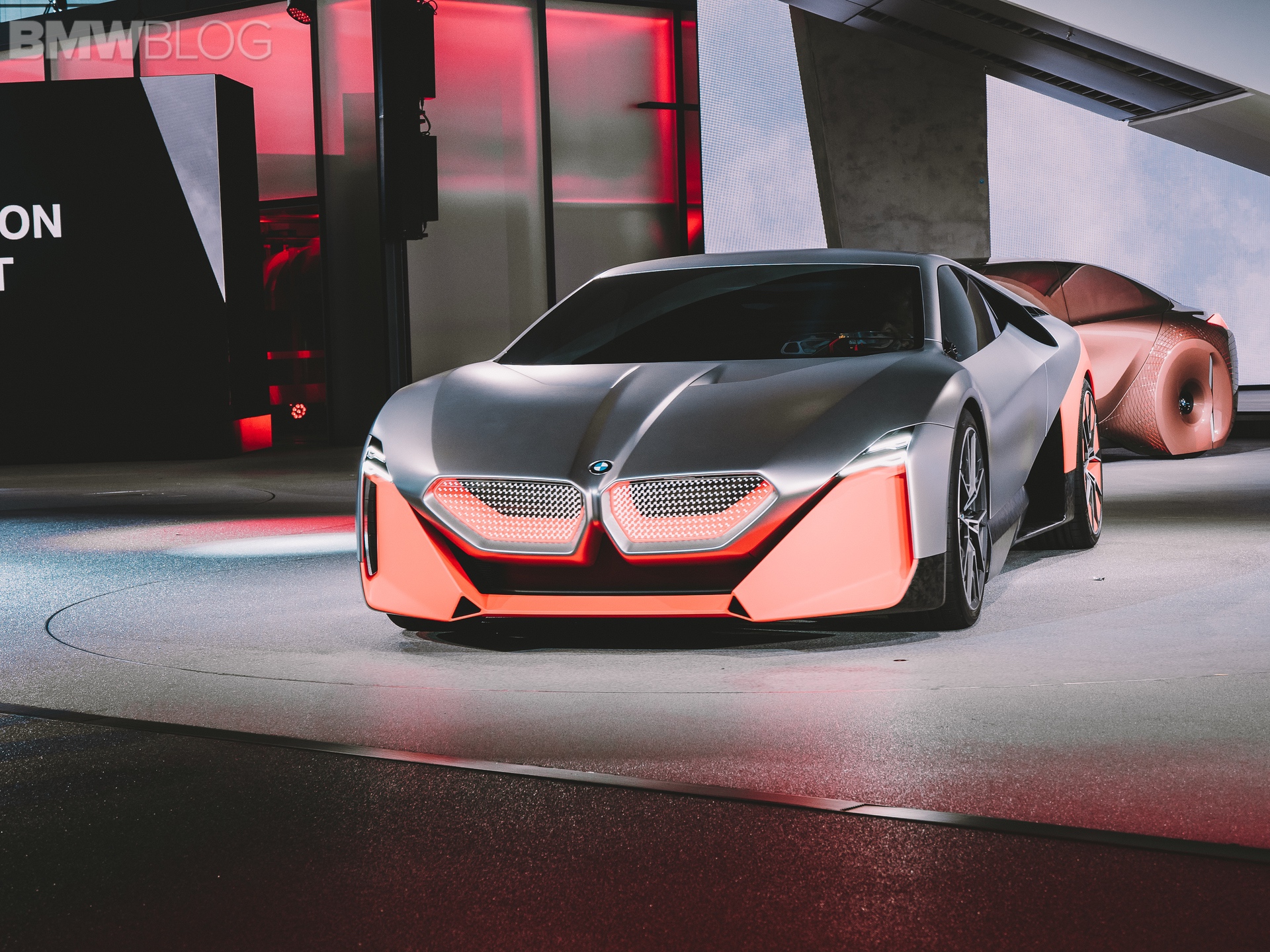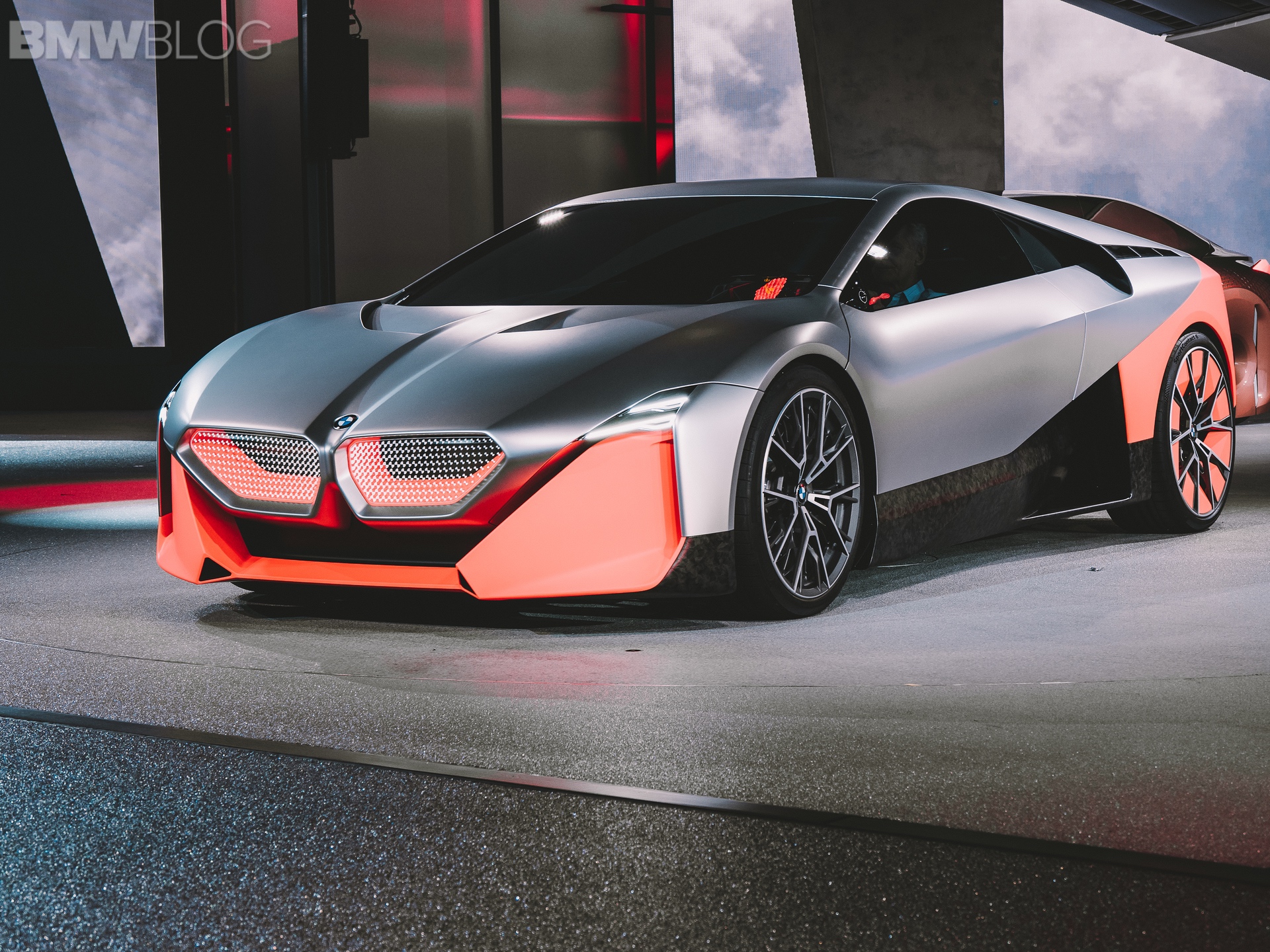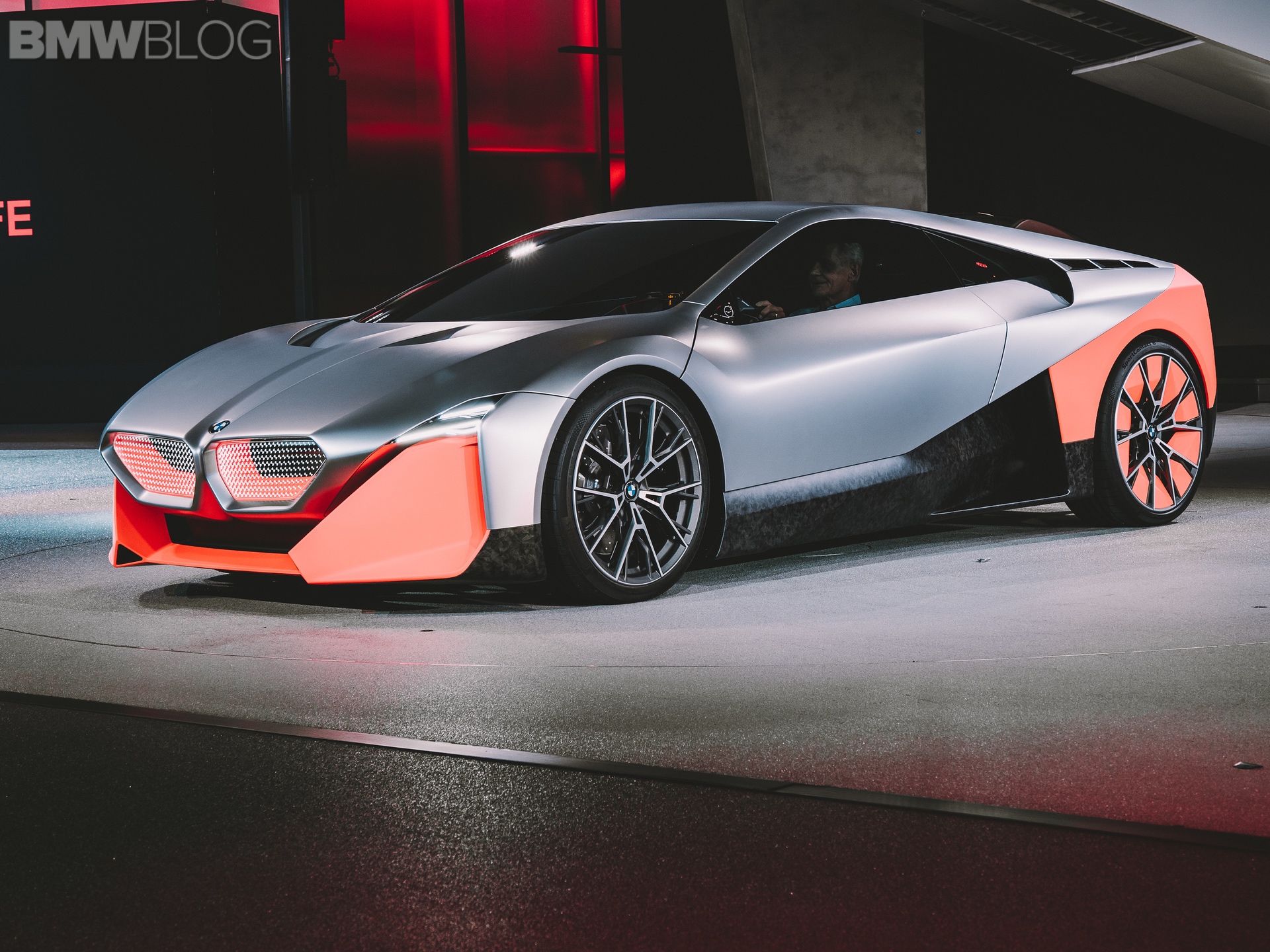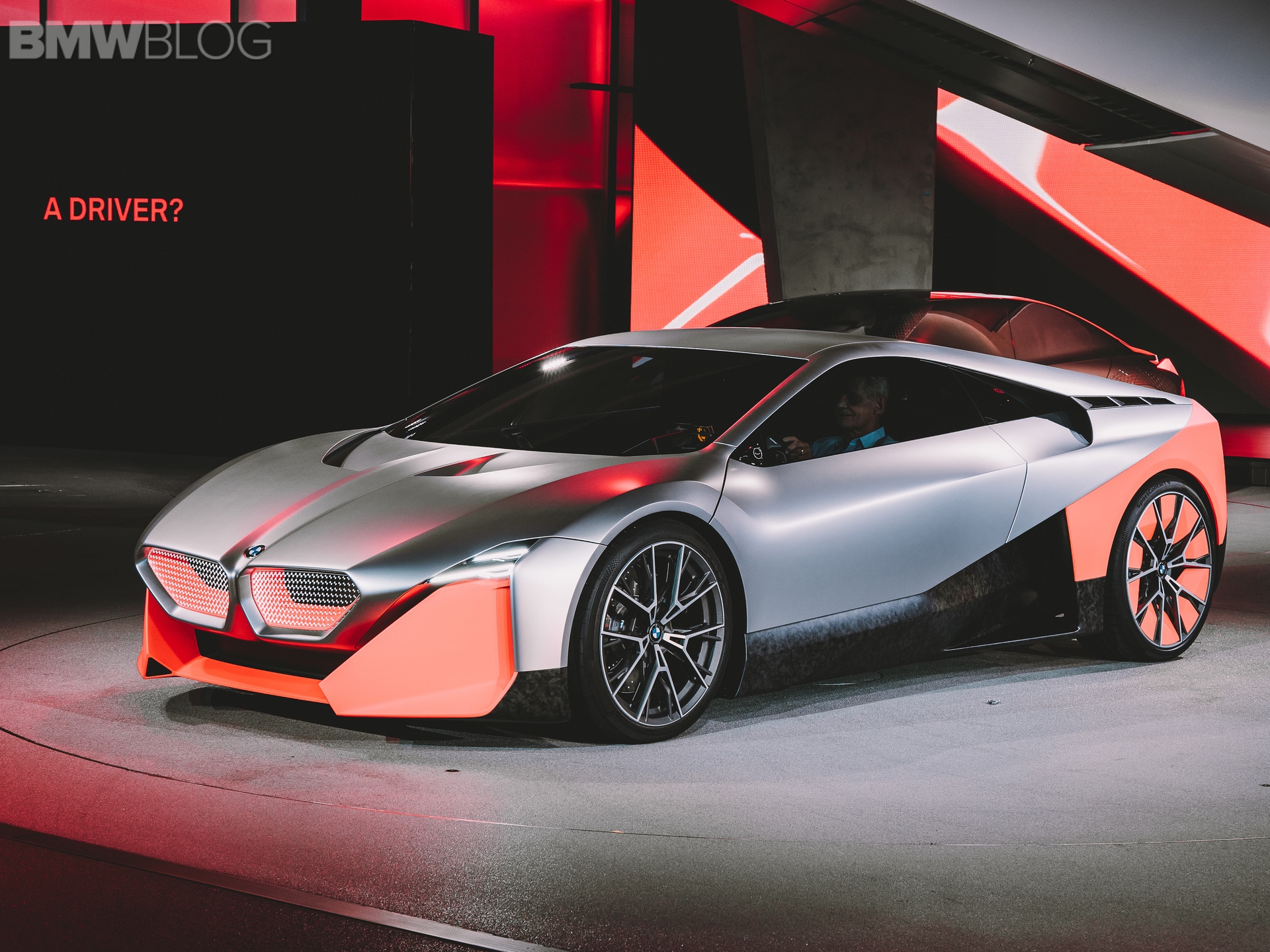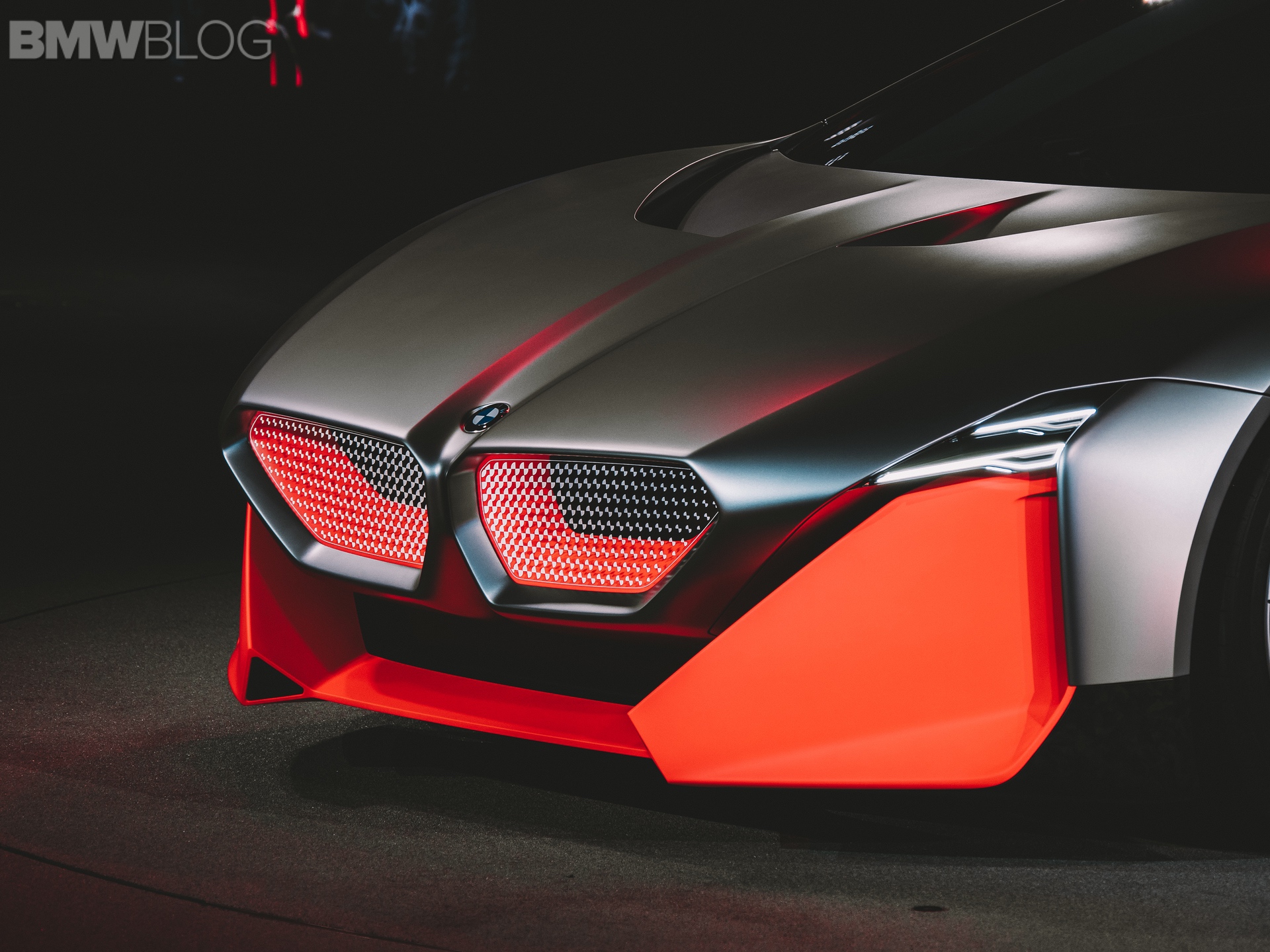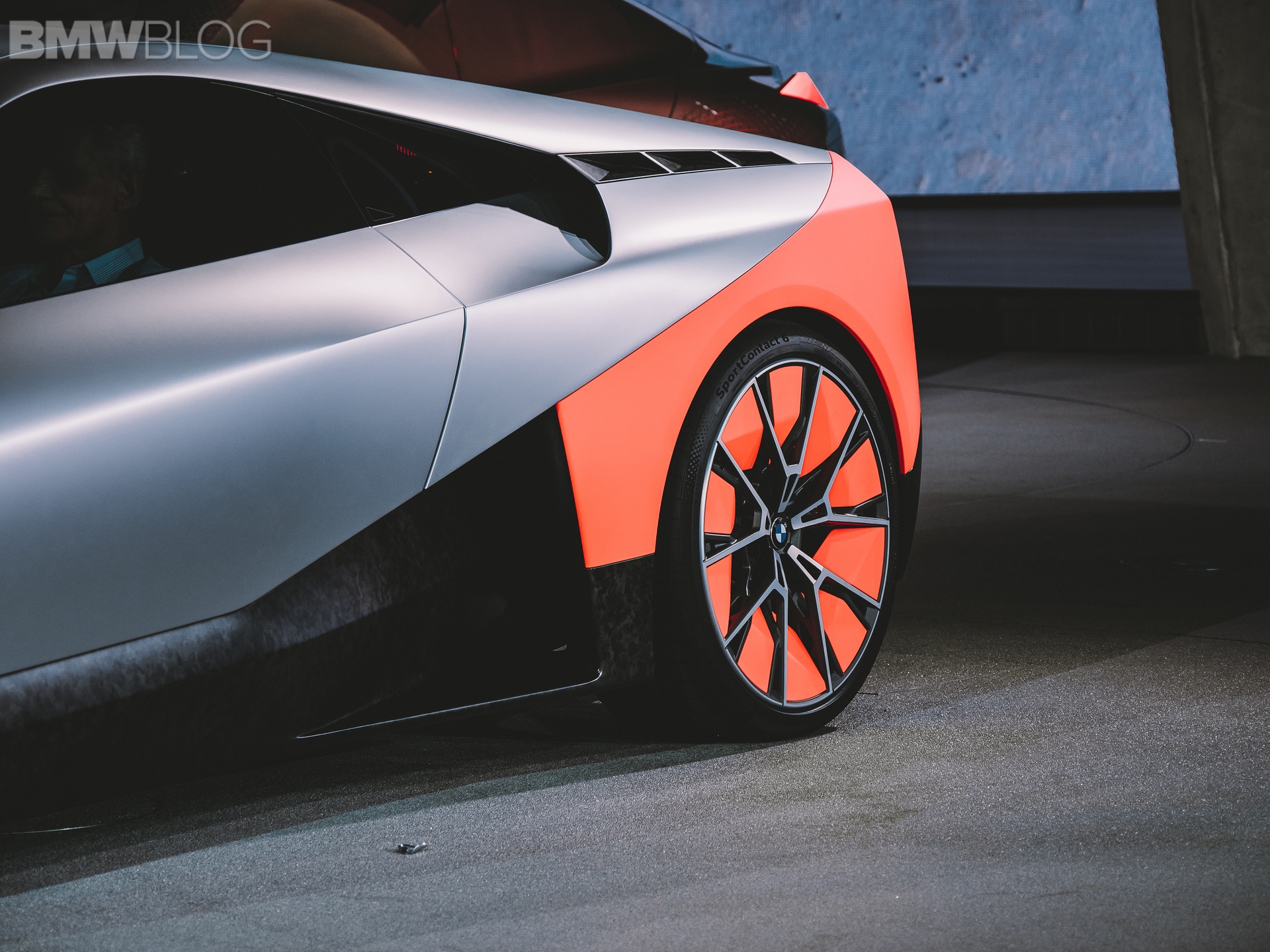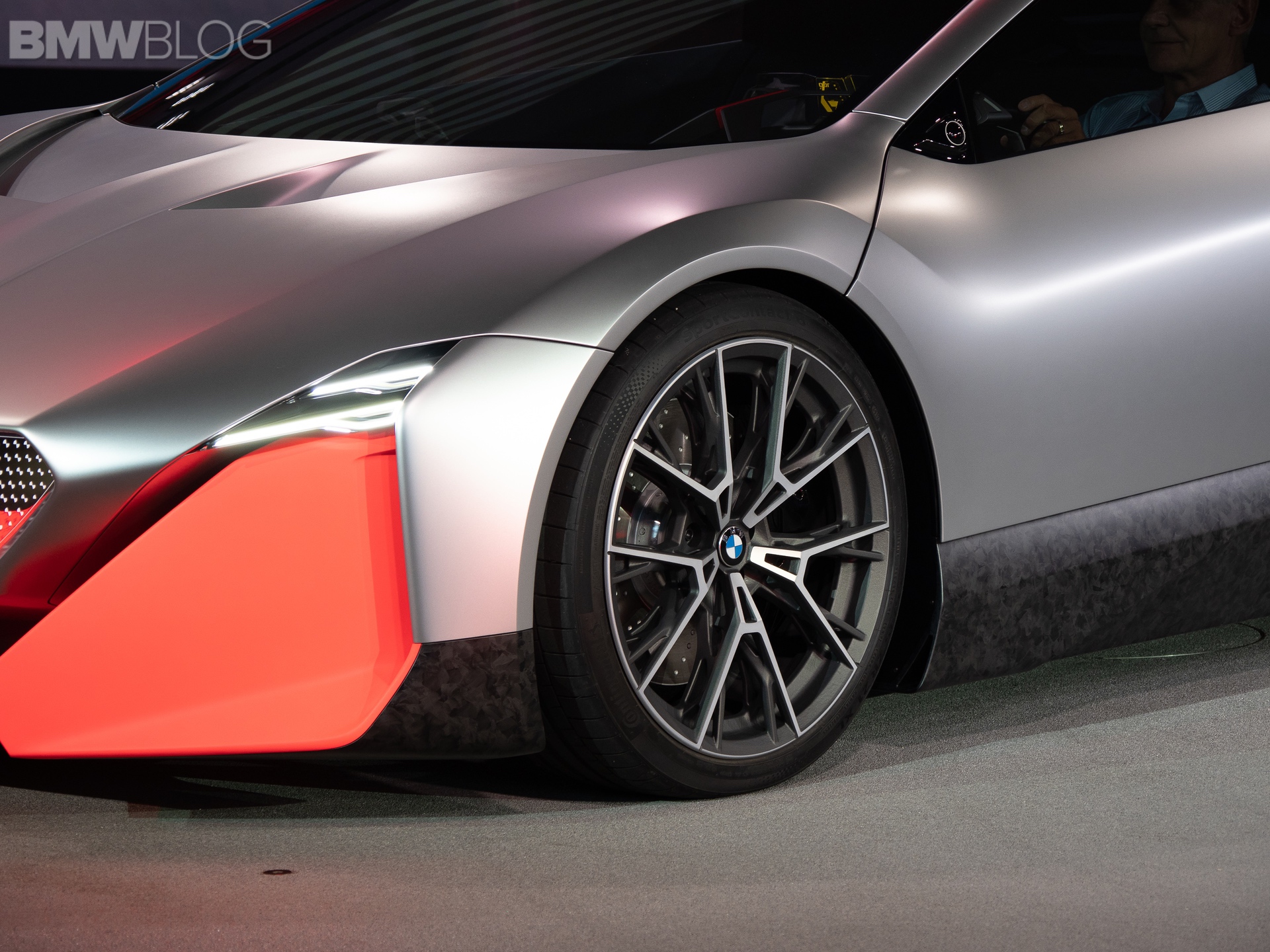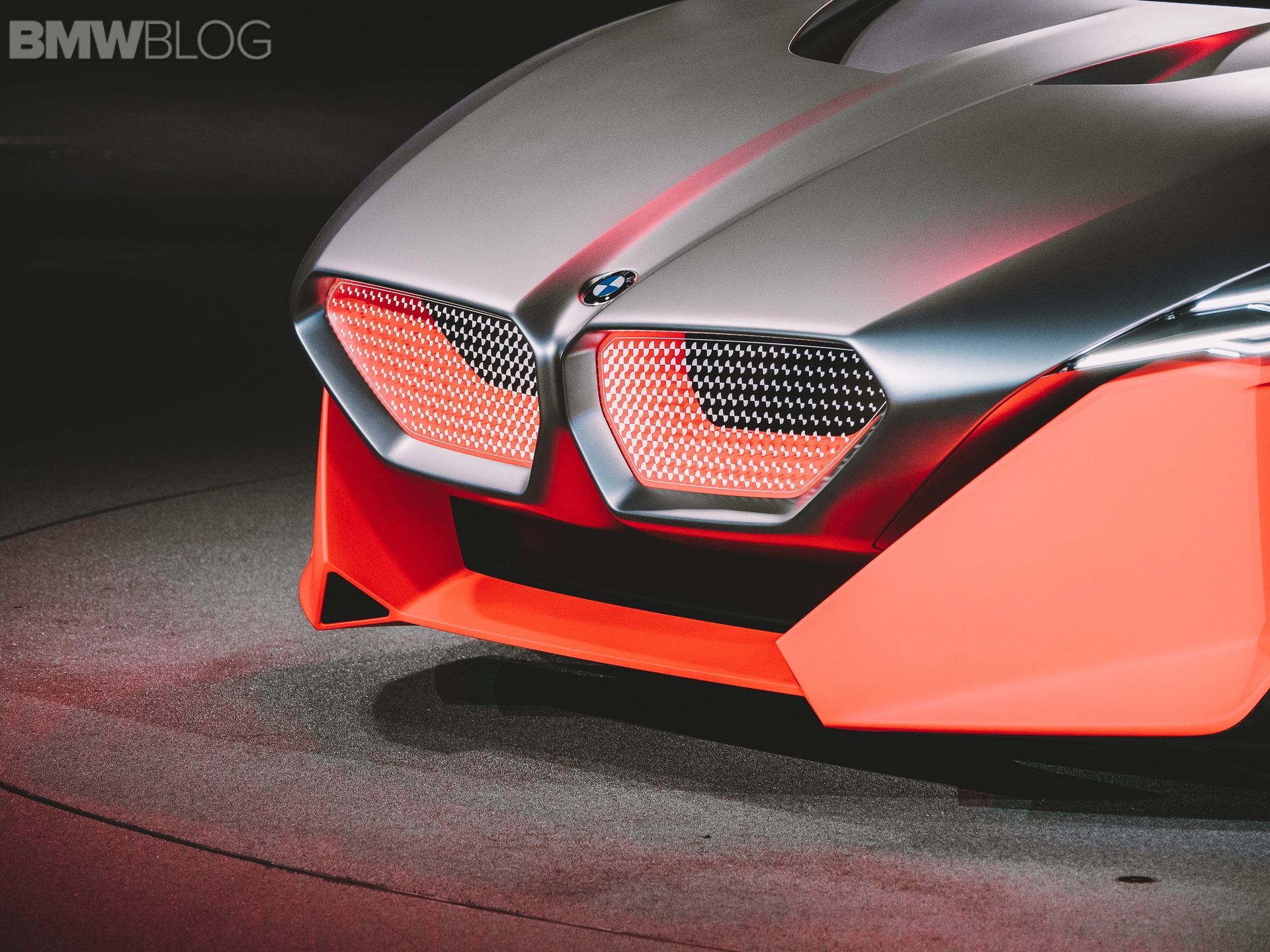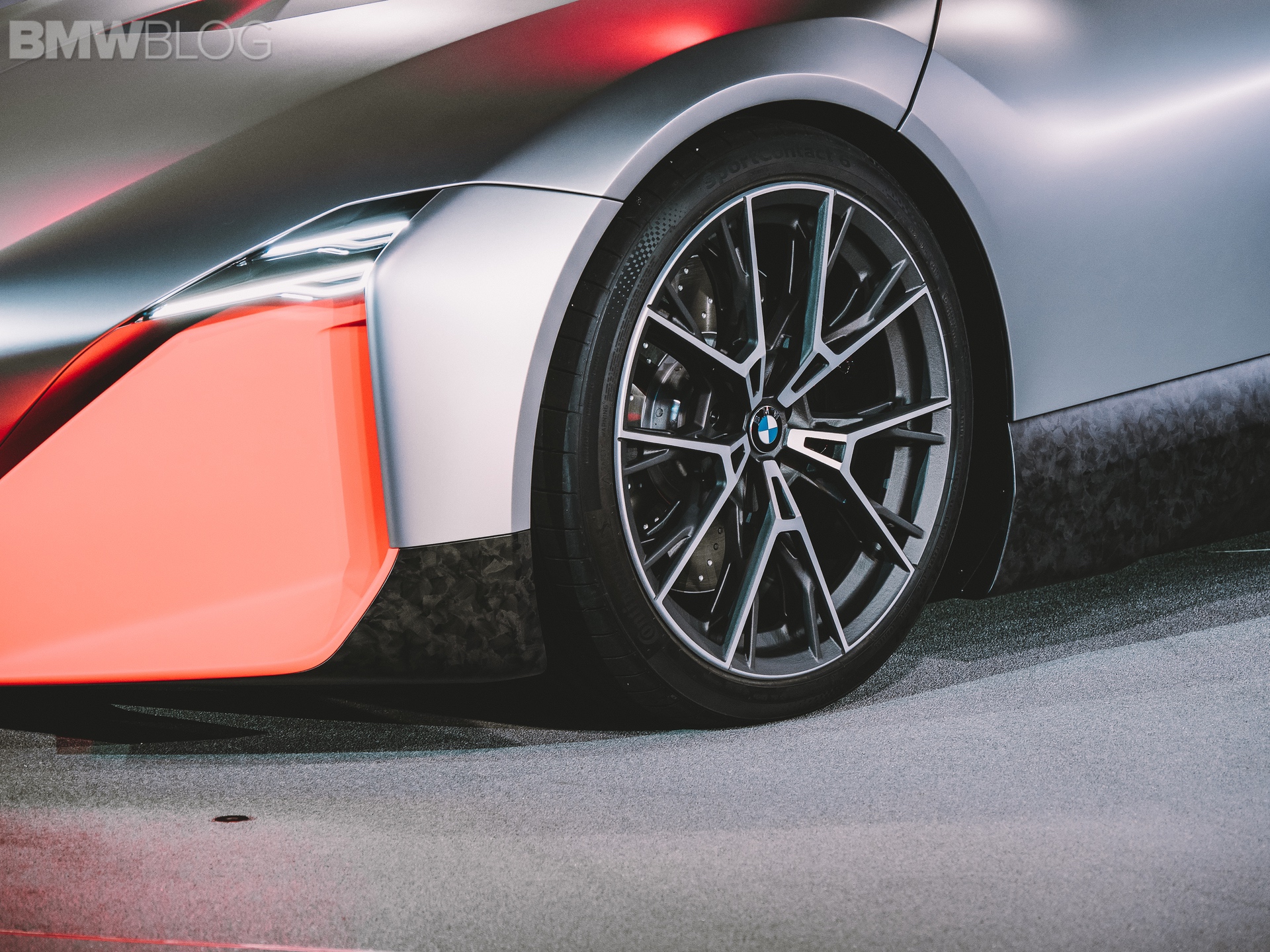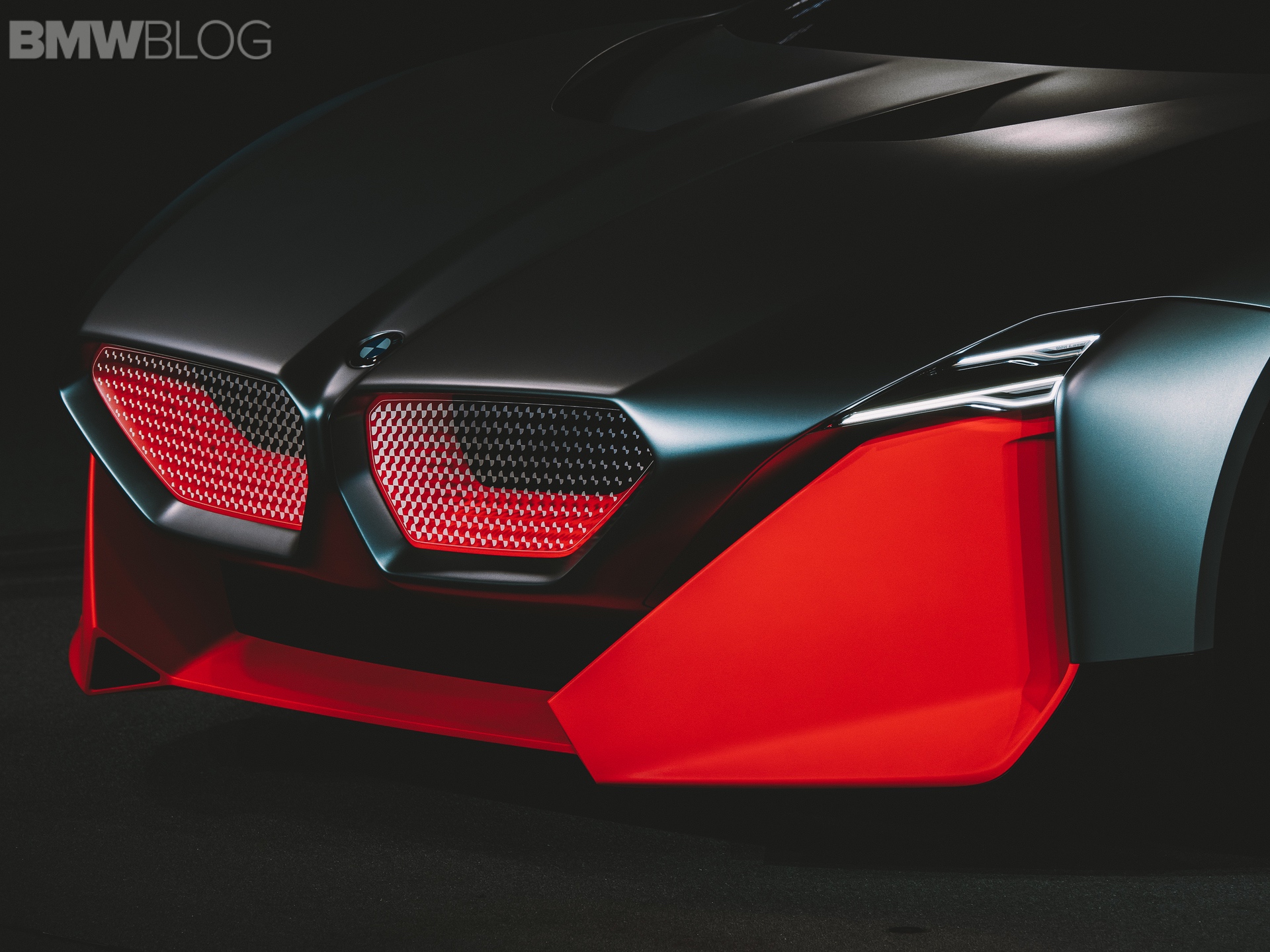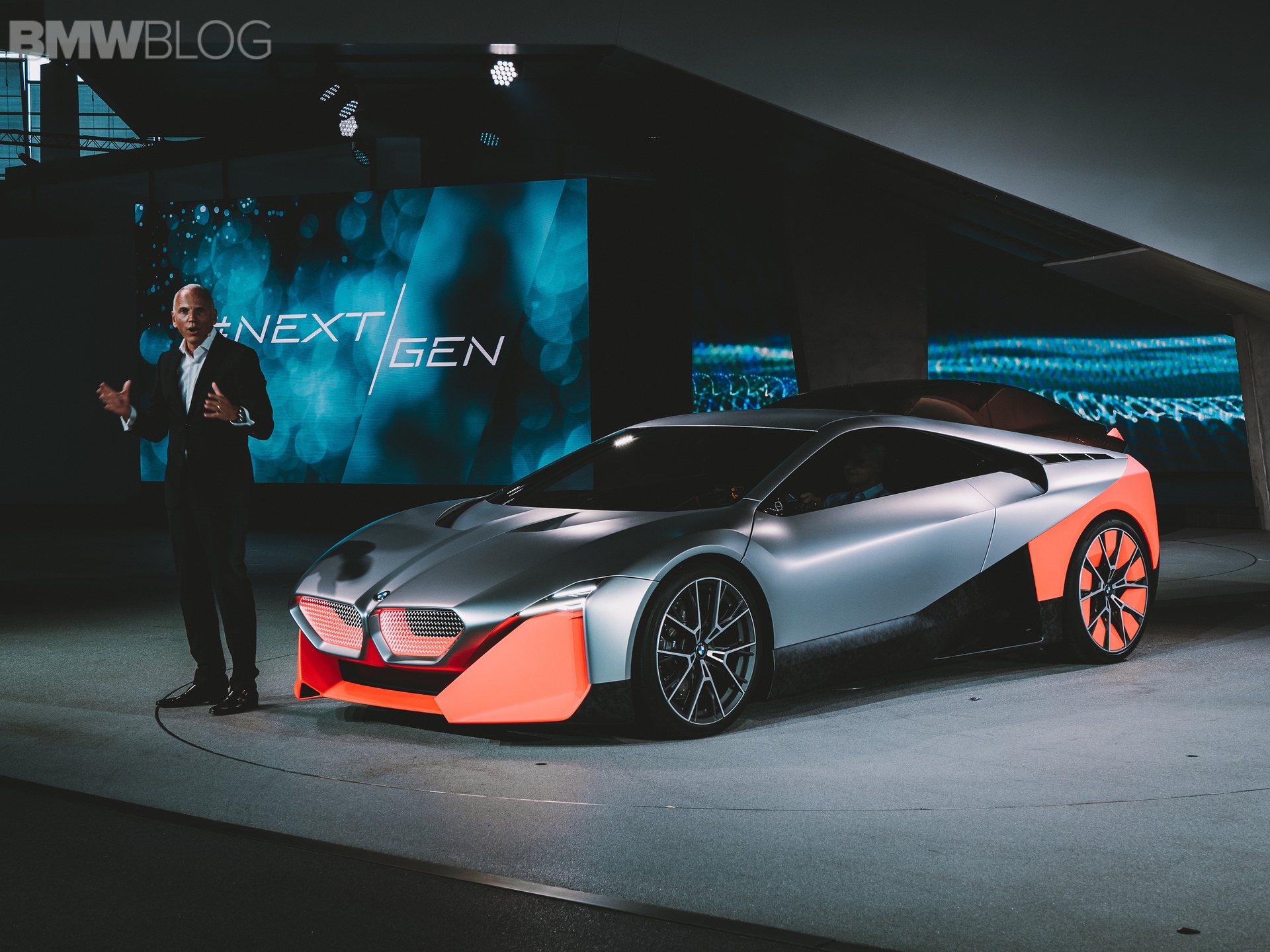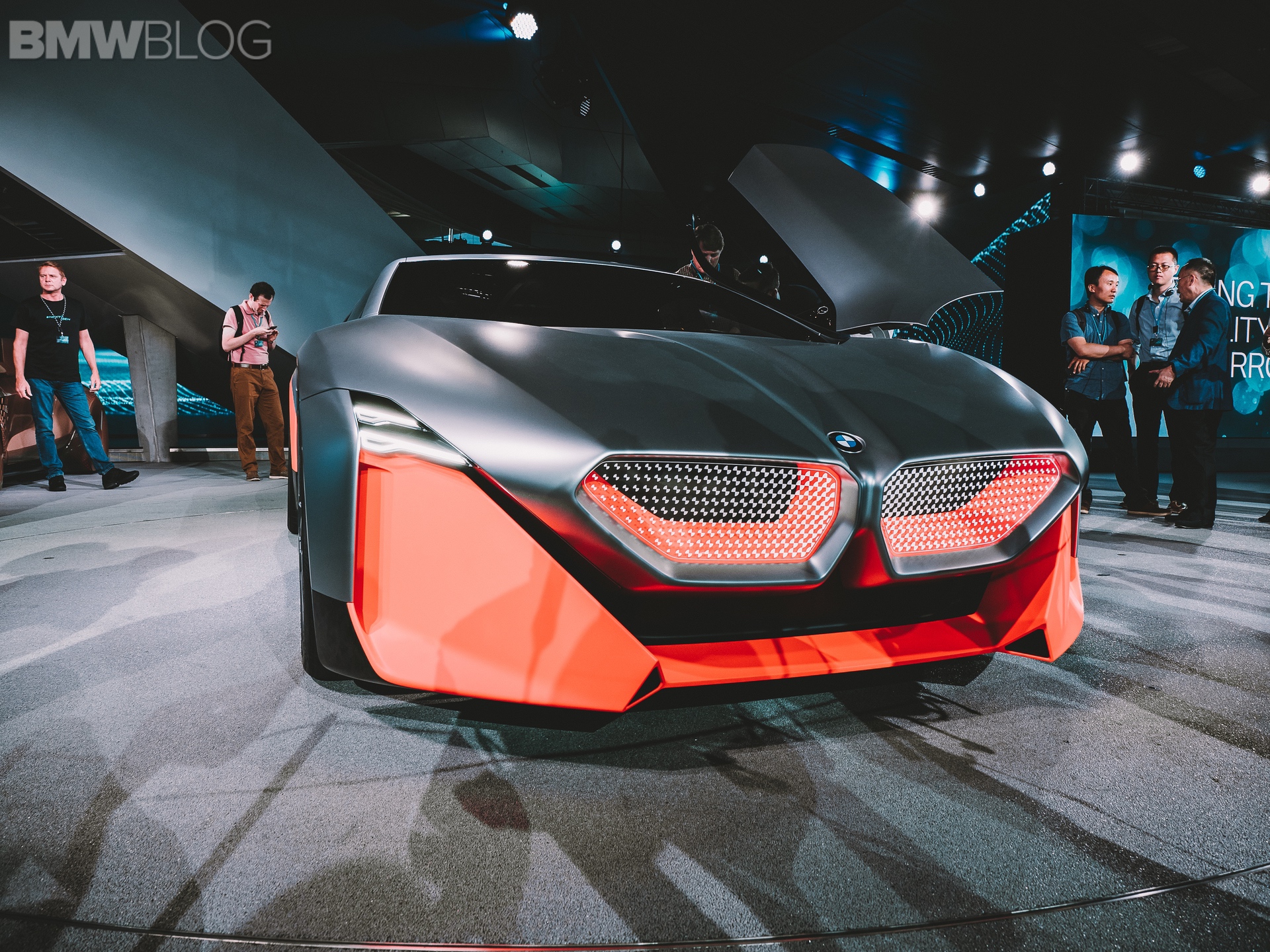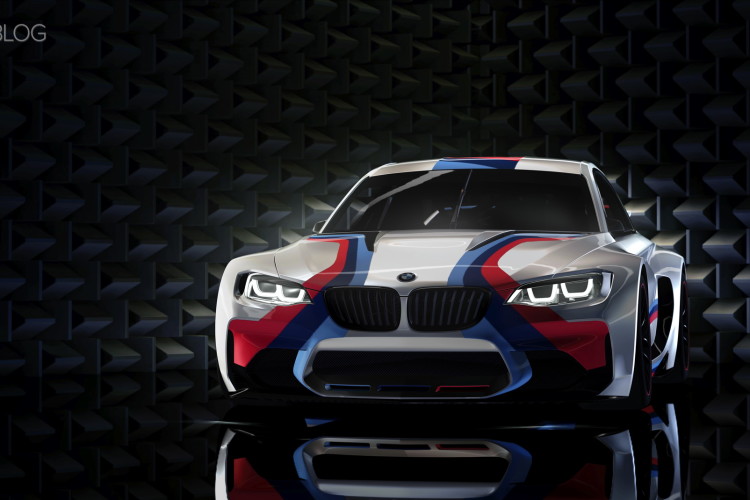After many years of a true successor to the popular BMW i8, the Bavarians have just unveiled earlier today the all-new BMW Vision M Next. The new concept car is the undisputed highlight of the #NextGen at the BMW Welt in Munich and shows that even in an increasingly electrified world with increasingly autonomous moving cars, there is still room for real driving pleasure. The design and color scheme of the gullwing cite icons like the BMW turbo, BMW M1 and BMW i8, which provides a strong demarcation from the rest of the current model range.
There is very little doubt that this new concept will replace the i8 in the next few years and along with a new design, it will also bring some updates the plug-in hybrid architecture.
The M NEXT uses a four-cylinder turbocharged engine mounted behind the driver, in combination with electric motors, to make 600 hp. Even better than that, drivers will be able to choose between electrified all-wheel drive or pure rear-wheel drive.
Under optimal conditions, the BMW Vision M Next – in the most dynamic driving mode – accelerates from 0 to 100 km/h in just 3.0 seconds, making it the fastest production BMW ever.
There are, of course, other driving modes. In Ease mode, the BMW M Next creates a relaxed and noiseless electric range of 100 kilometers. This means that the sports car concept will continue to be suitable for city traffic in the future and can cover longer distances, if required, without causing local emissions.
In the interior, the driver is clearly the focus. His face unlocks the sports car when he approaches and a touch of the wing doors pave the way into the cockpit. There are two very sporty seats with a minimalistic cabin around them, encouraging the driver to focus just on the road.
The driver sees all the information relevant to the current driving situation in an augmented reality Head-Up display that is integrated into the windscreen all the way through.
It genuinely looks like a modern BMW M1 and its mid-engined layout with 600 hp make it a proper BMW supercar, never mind its hybrid nature. And it’s less than five years away from going to production.


